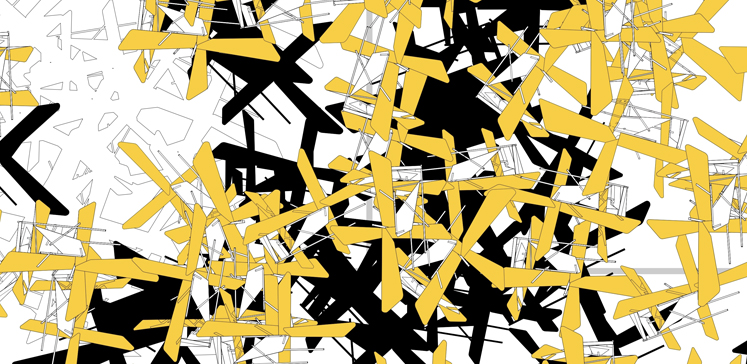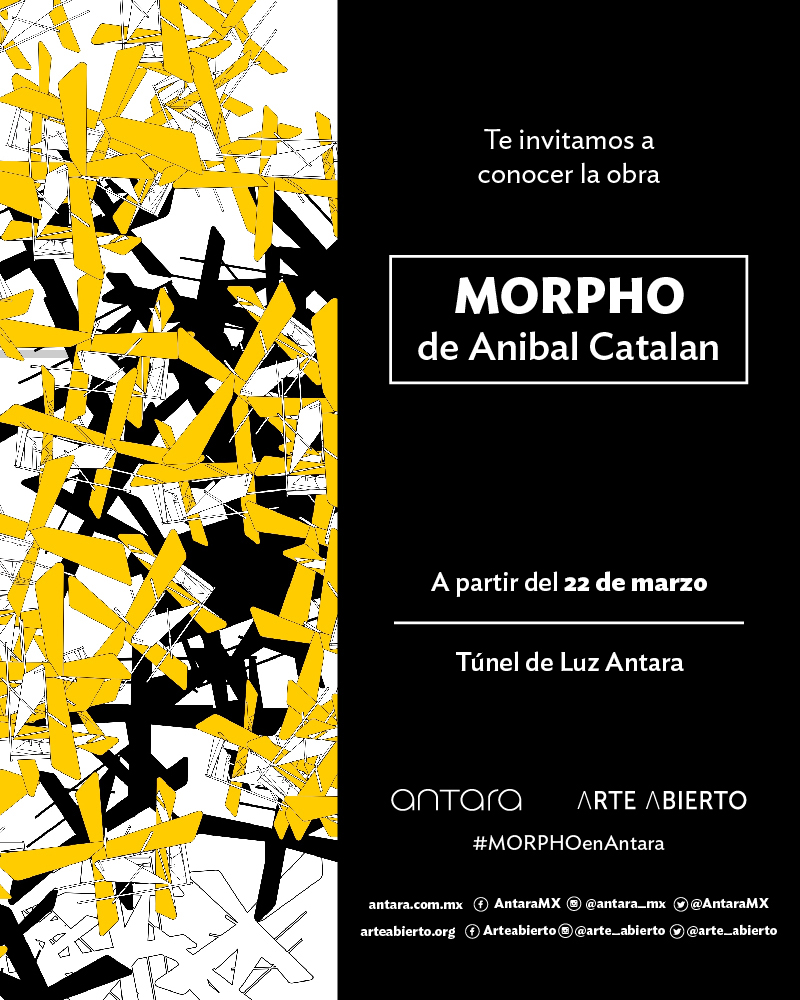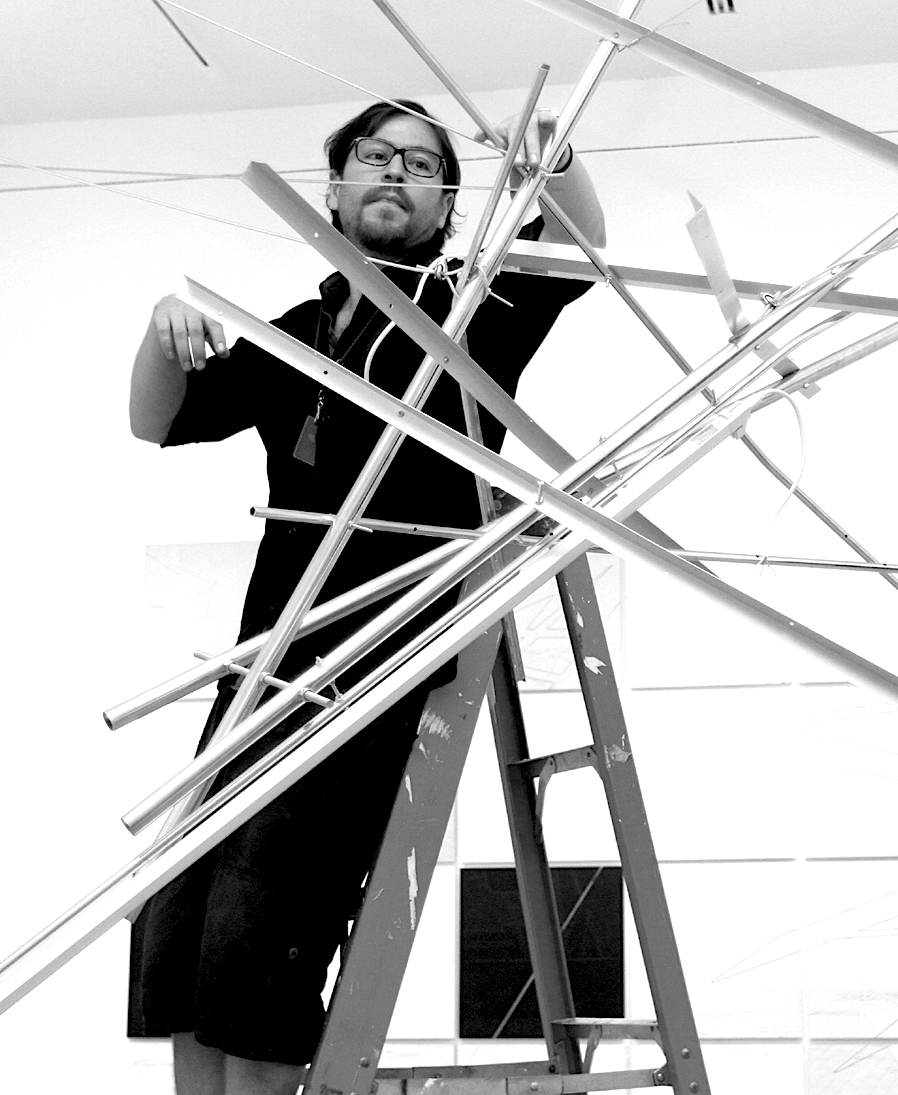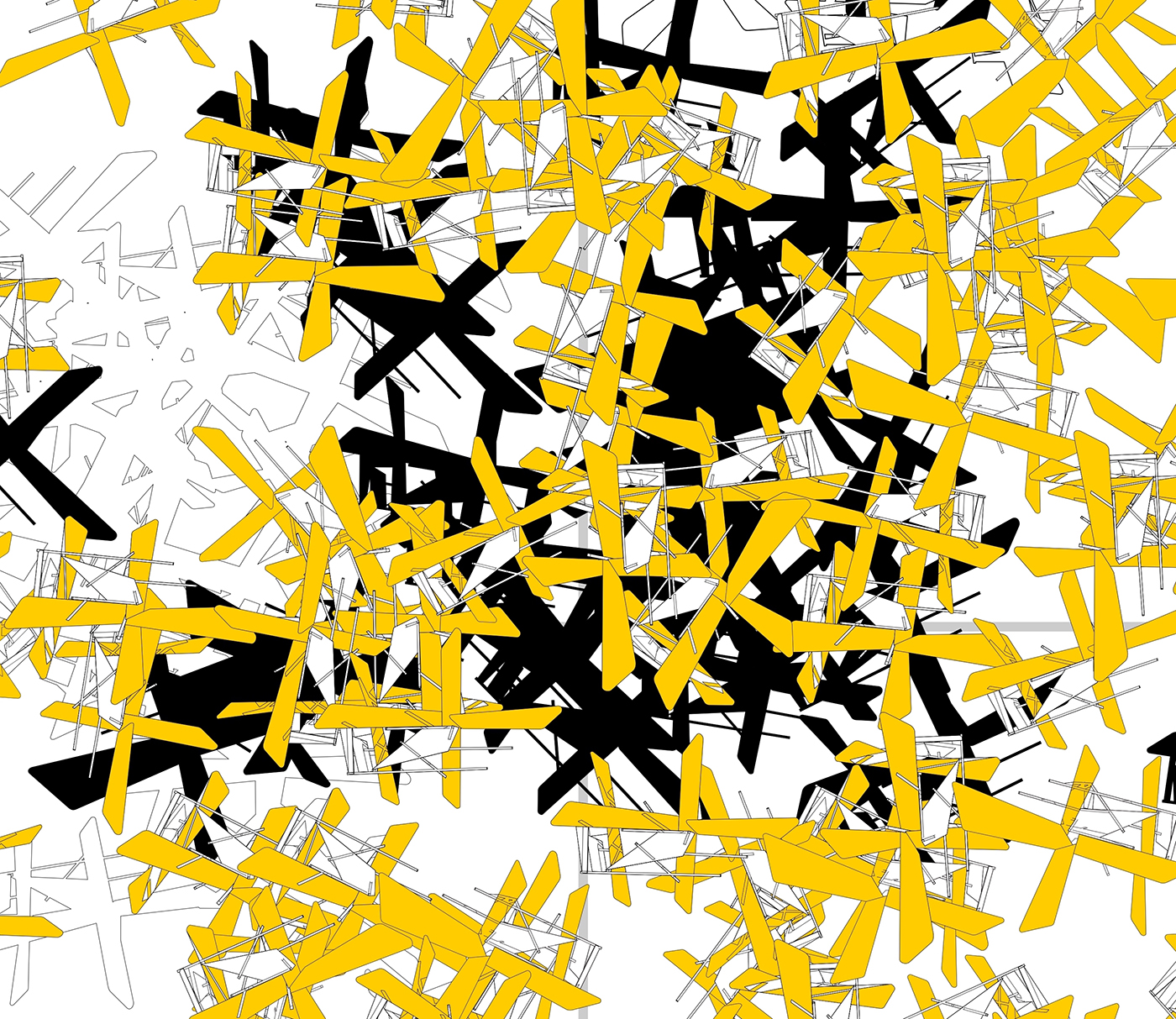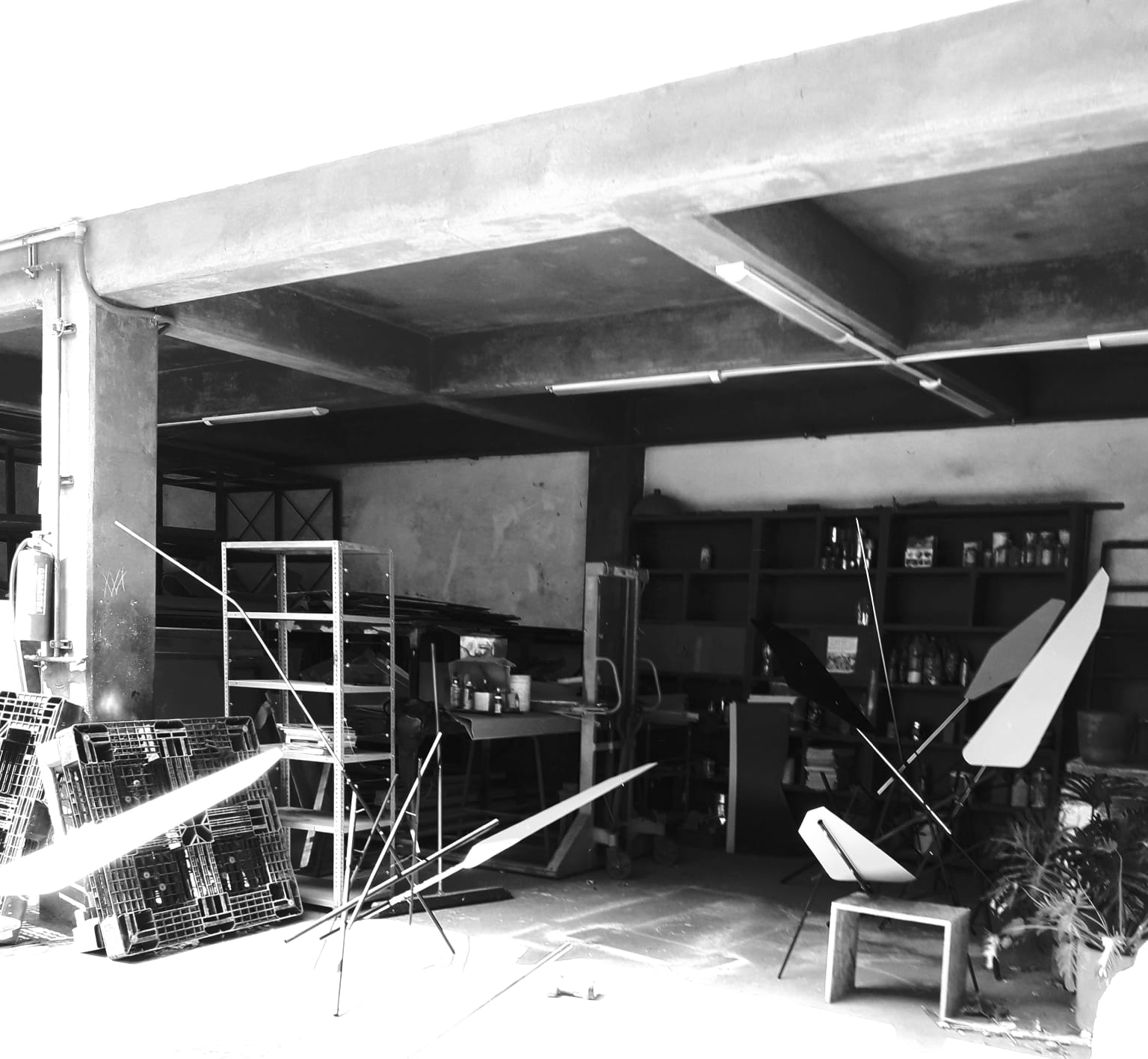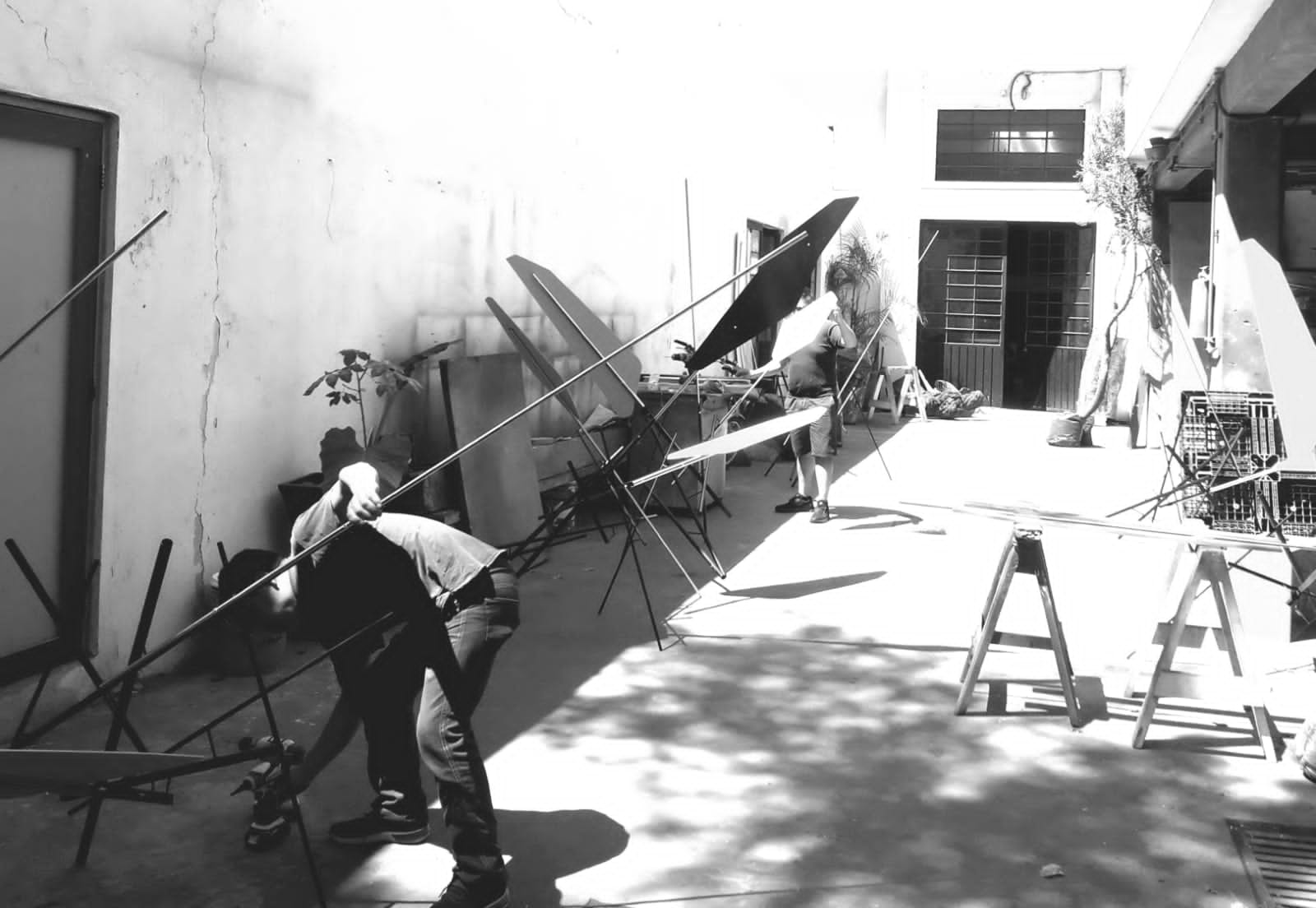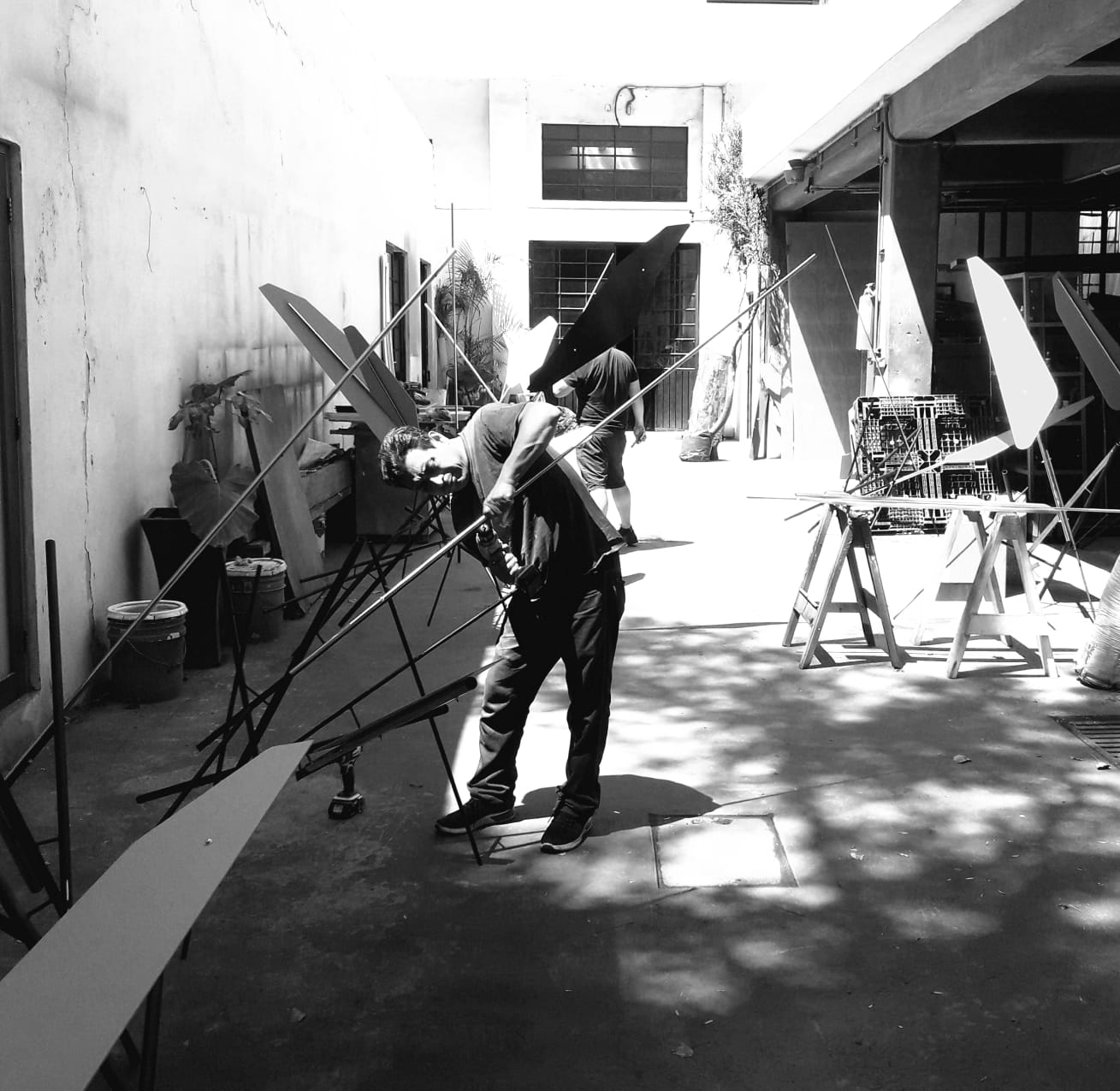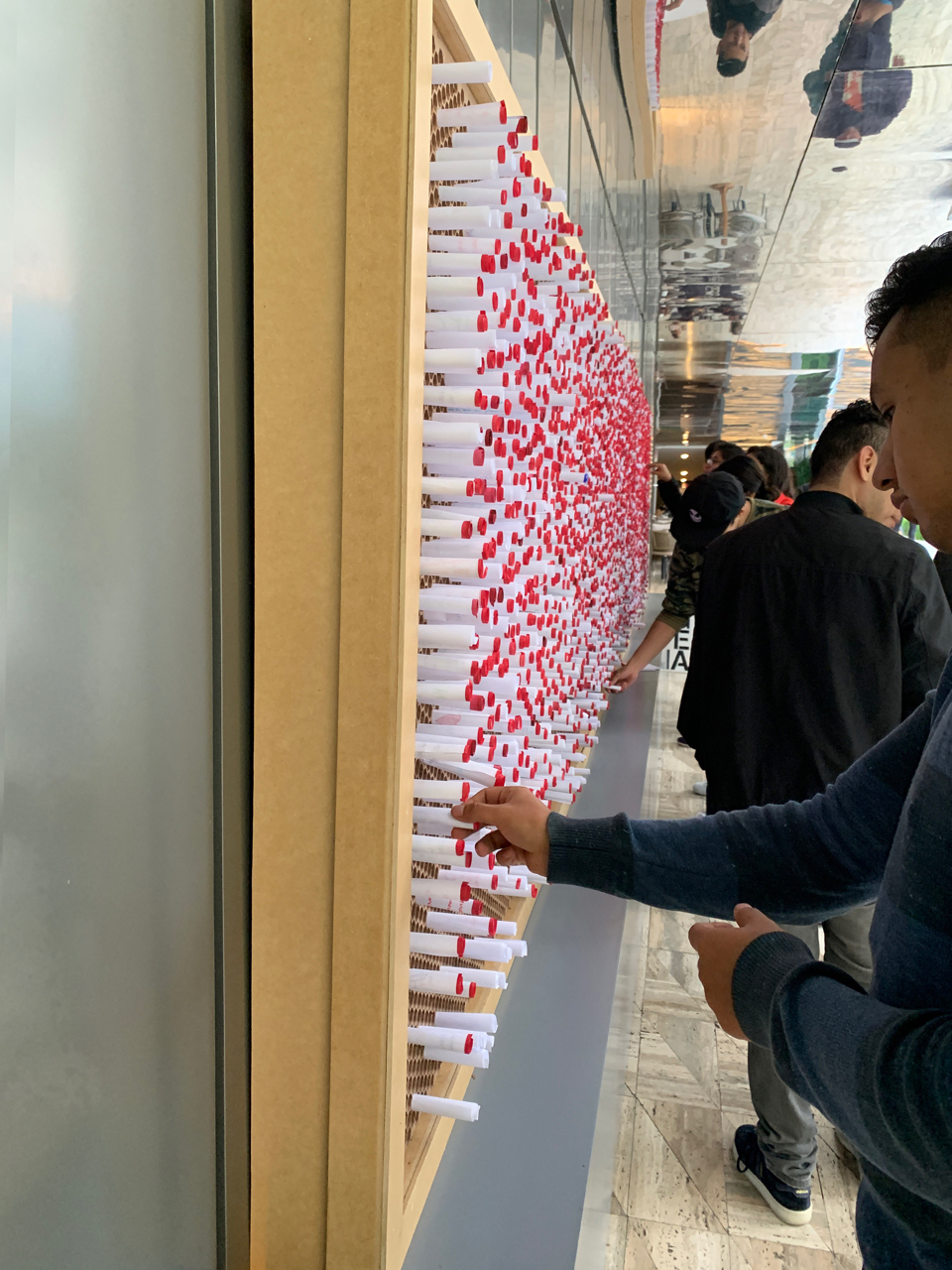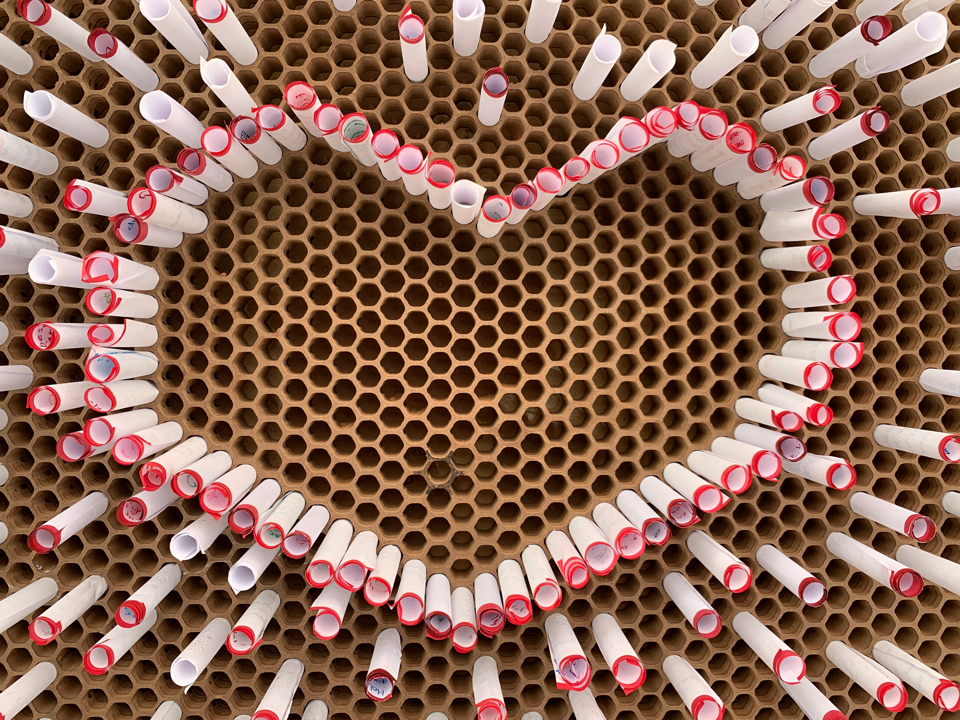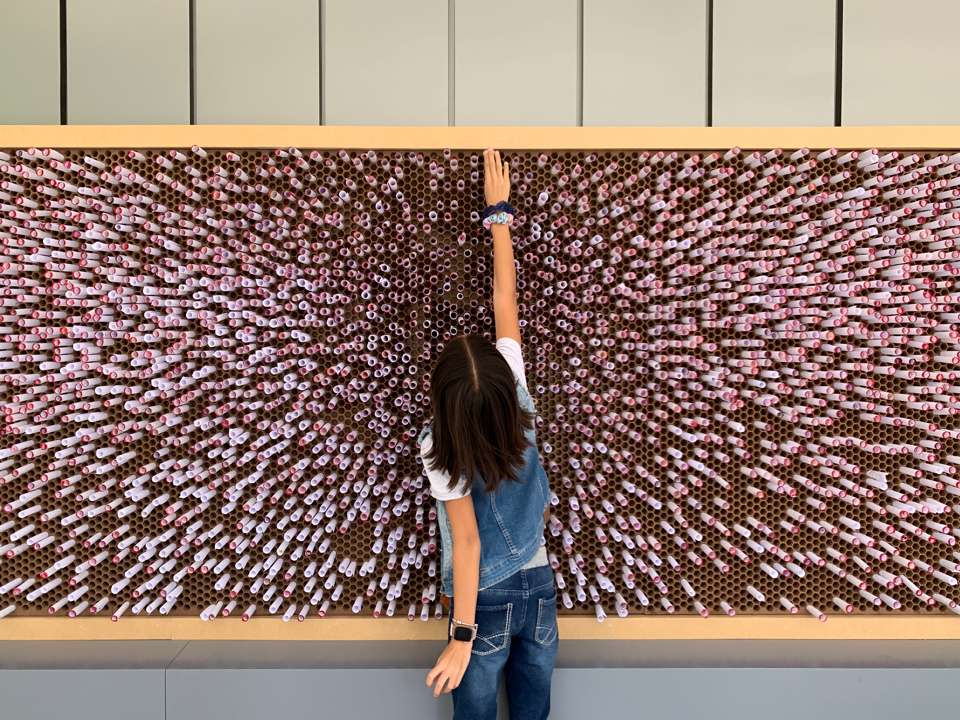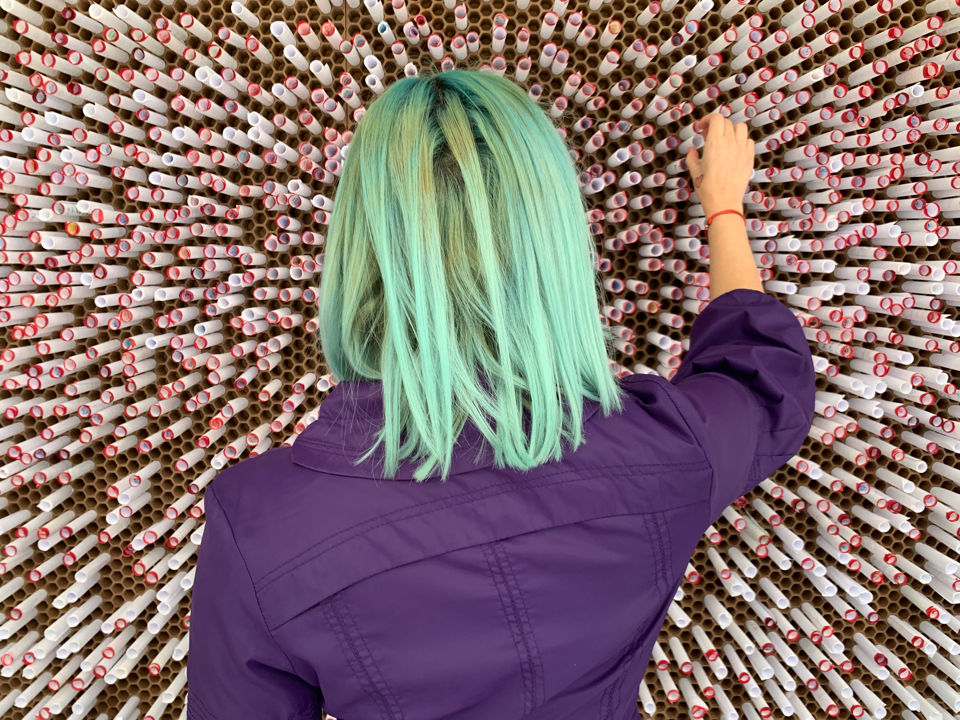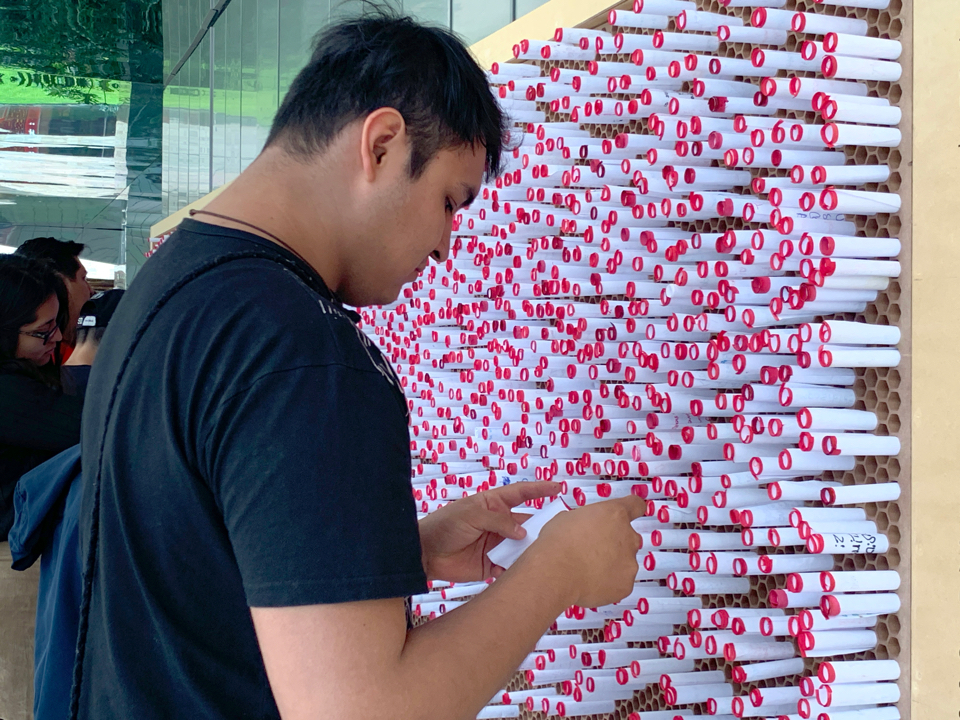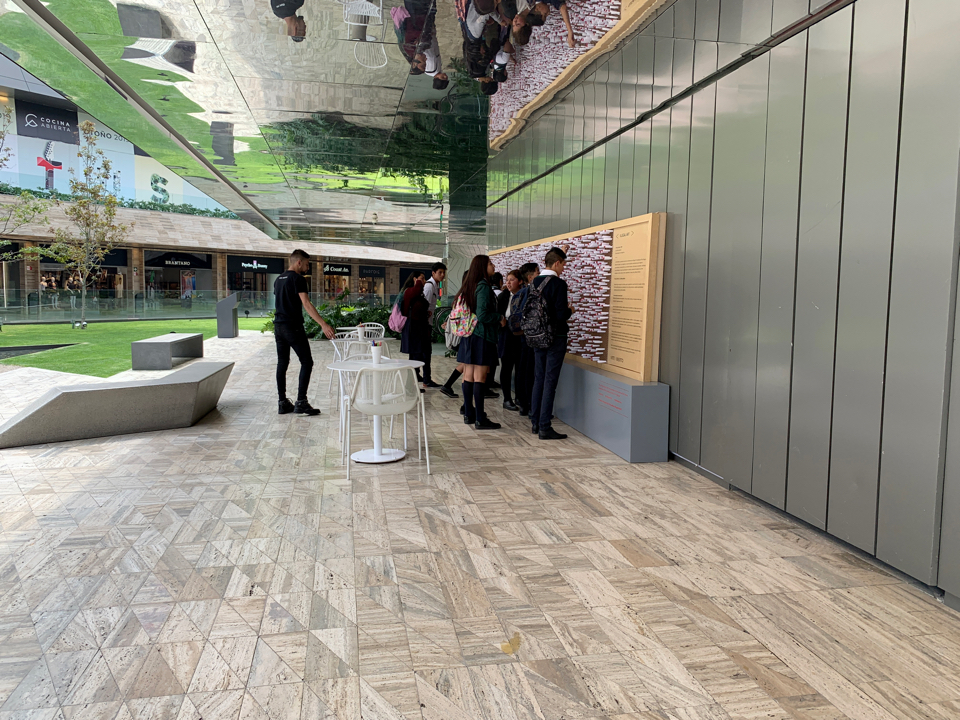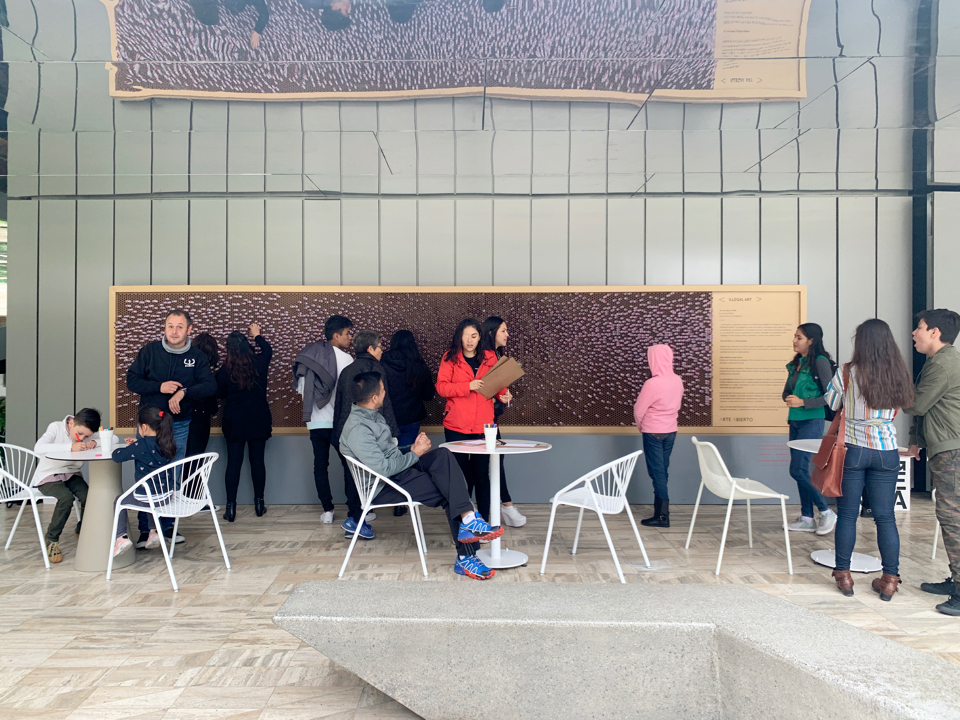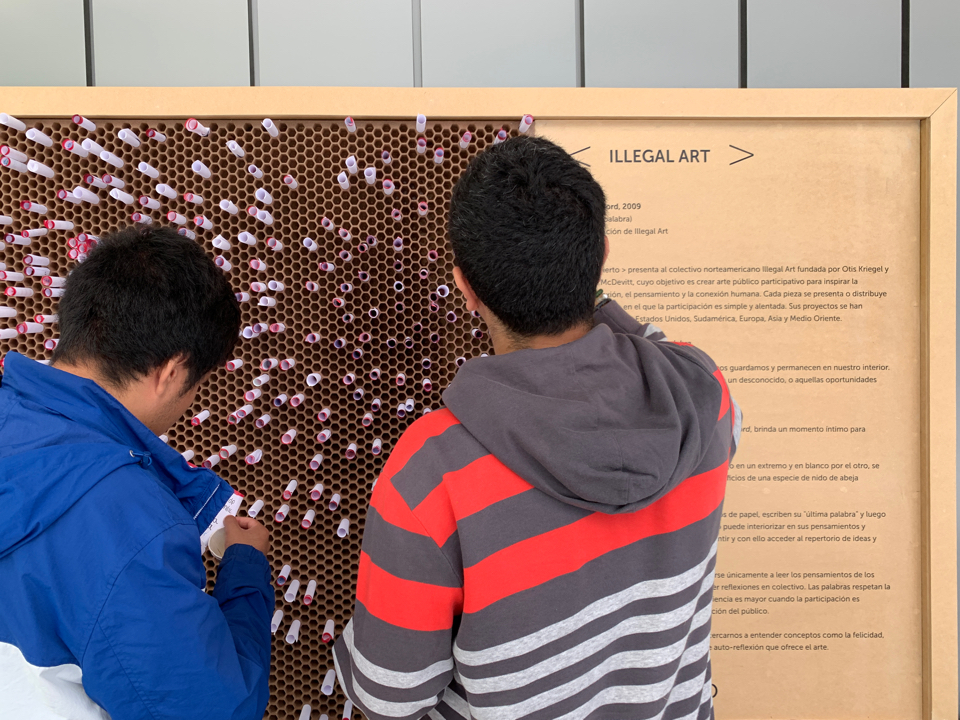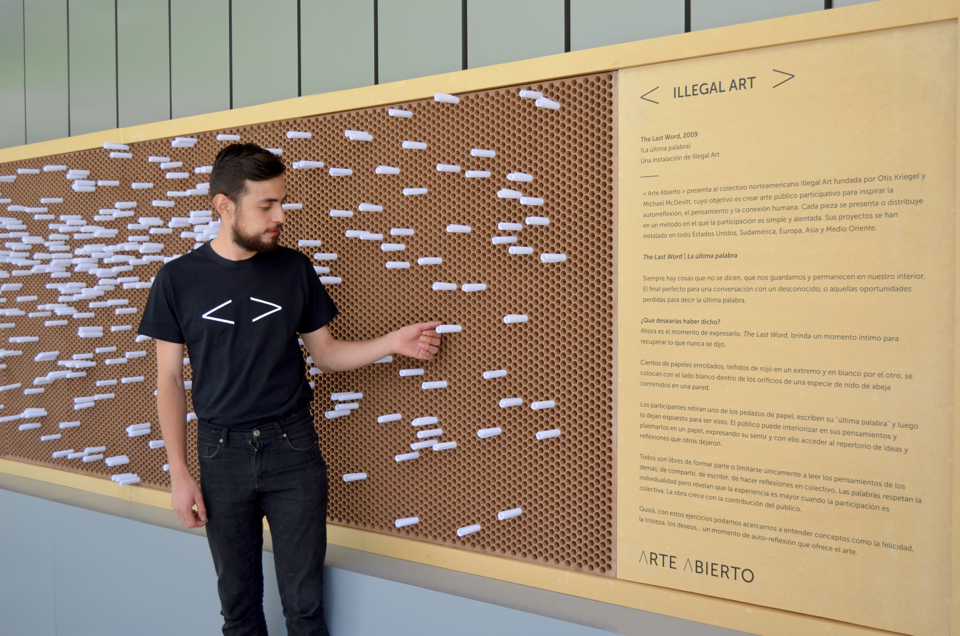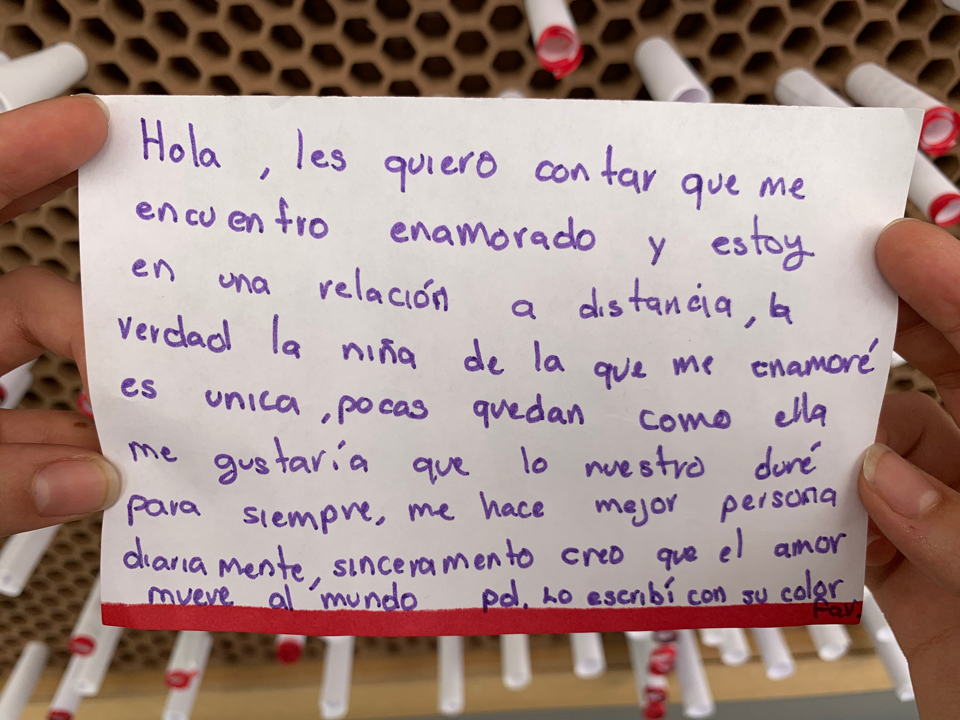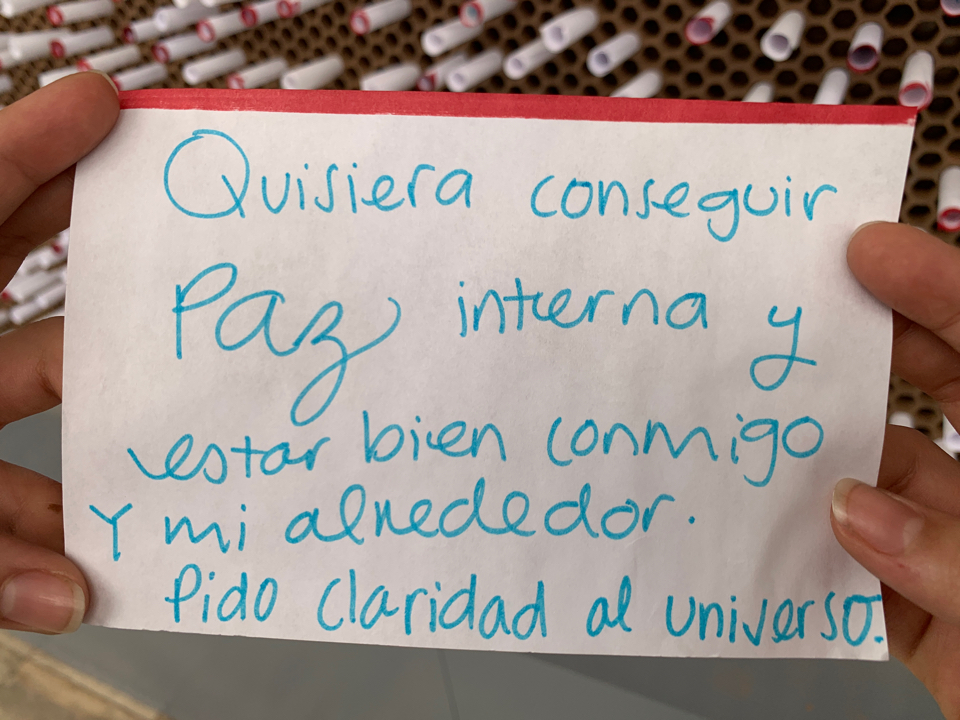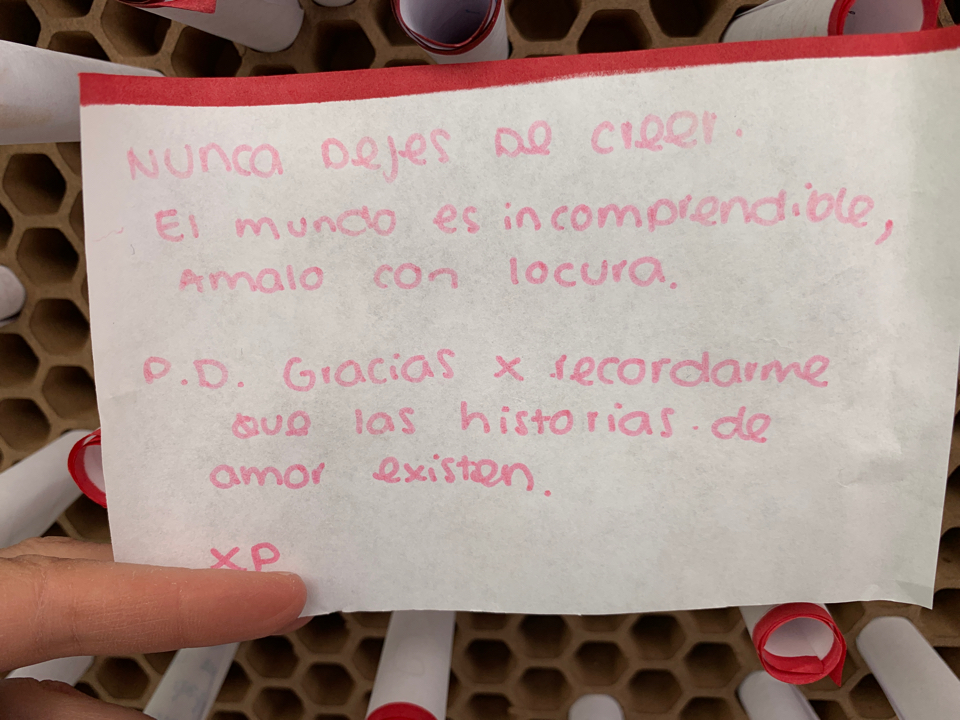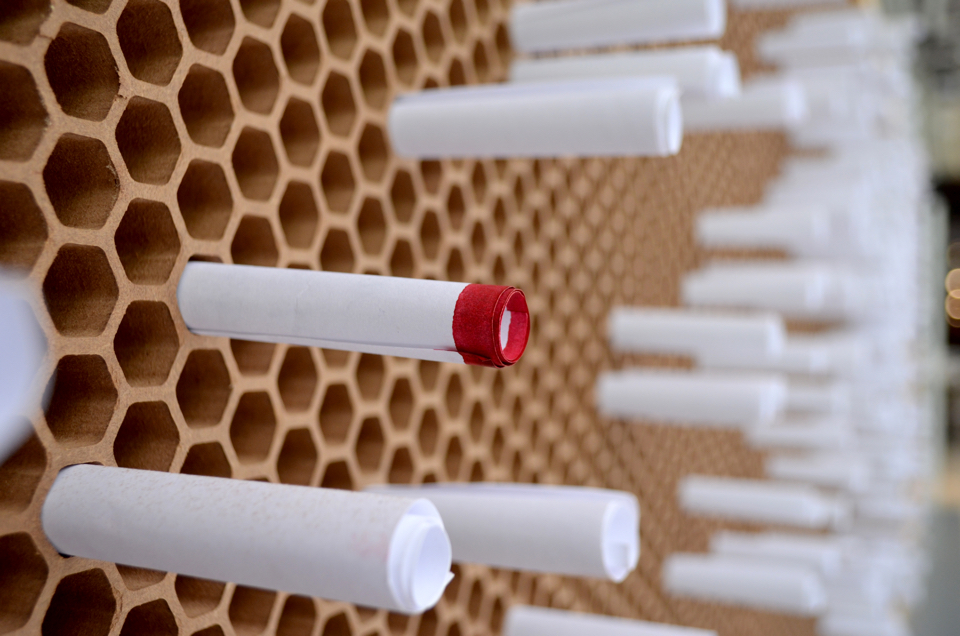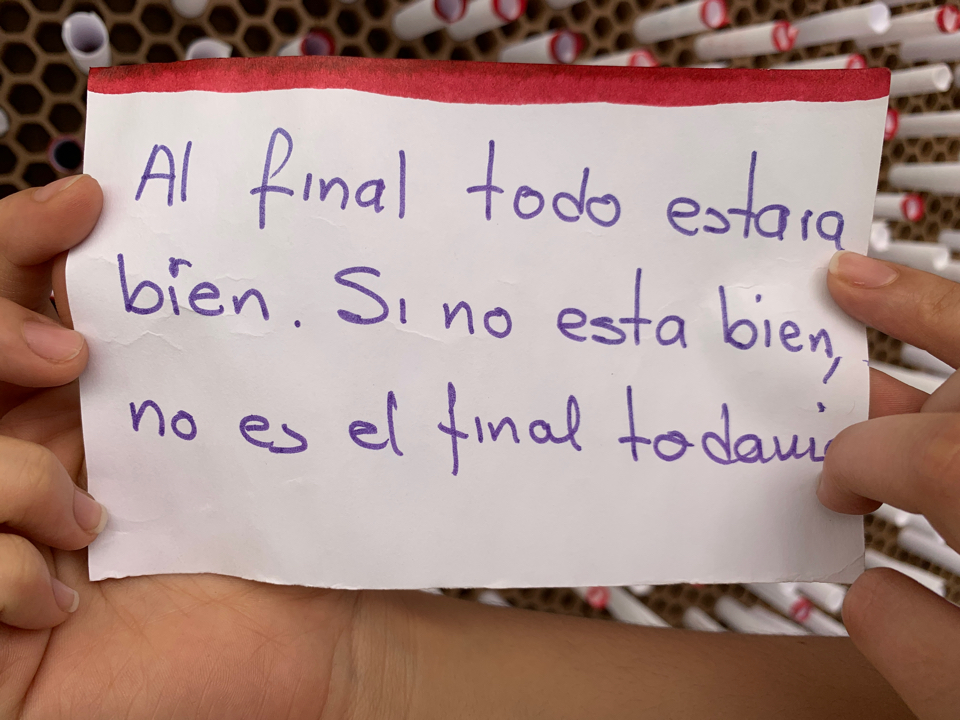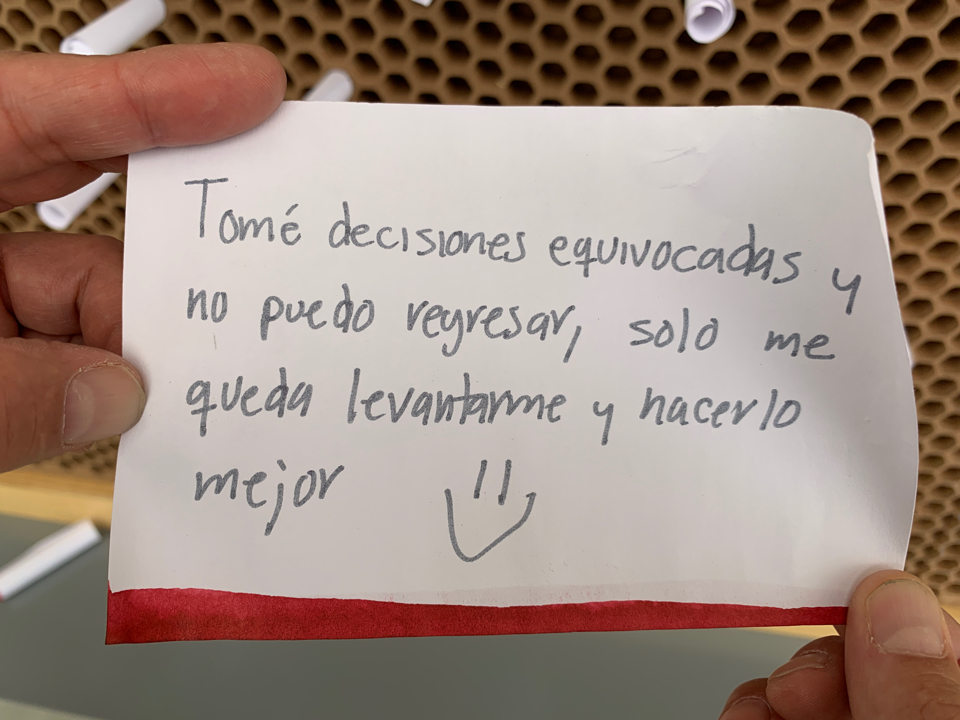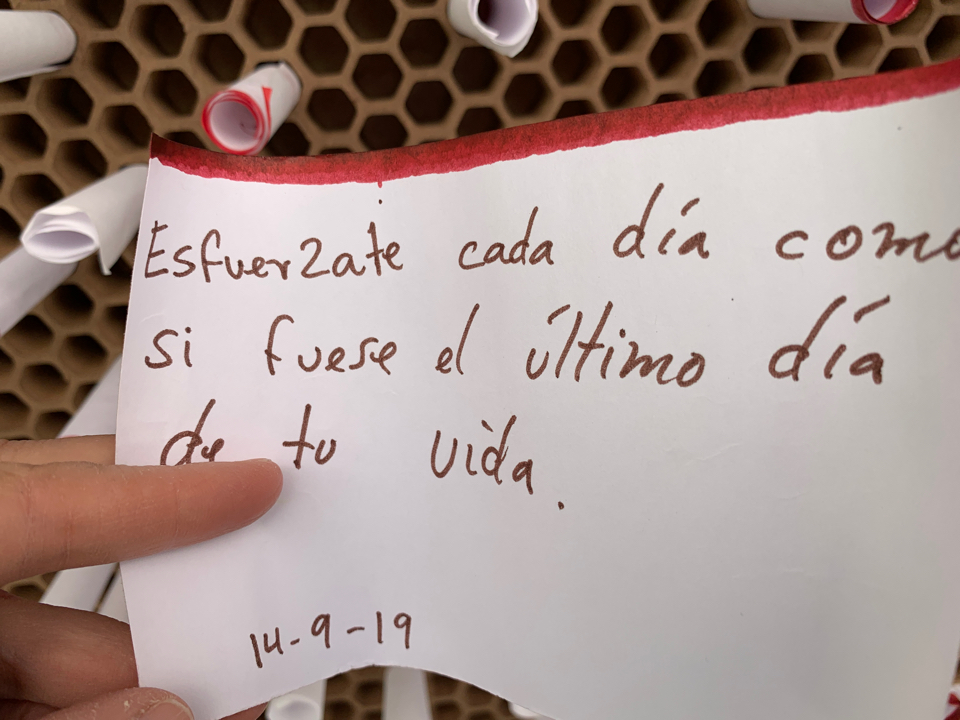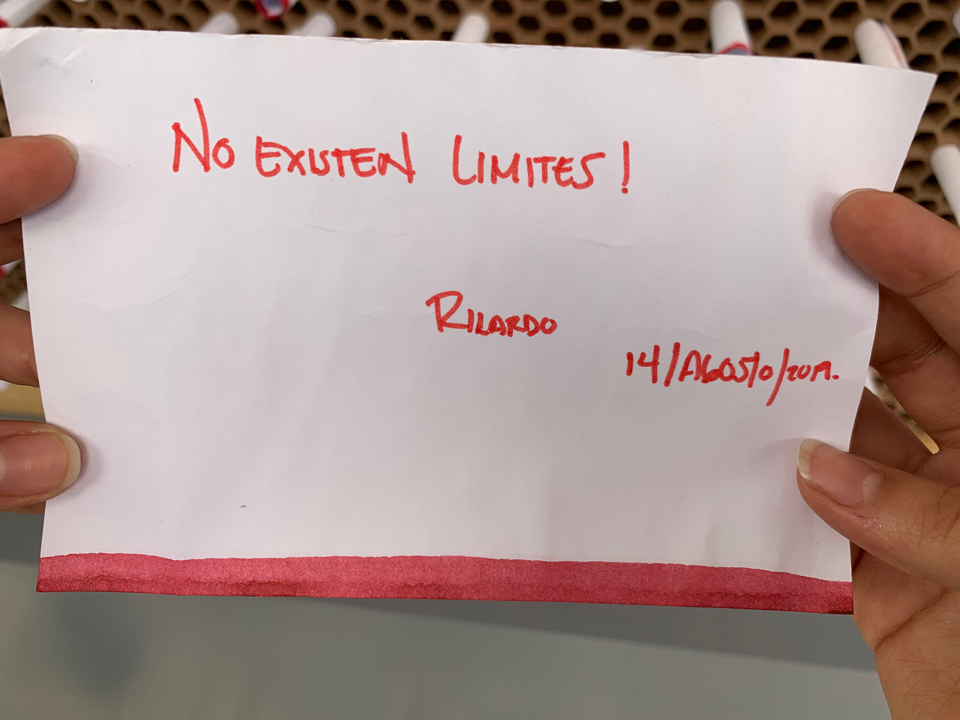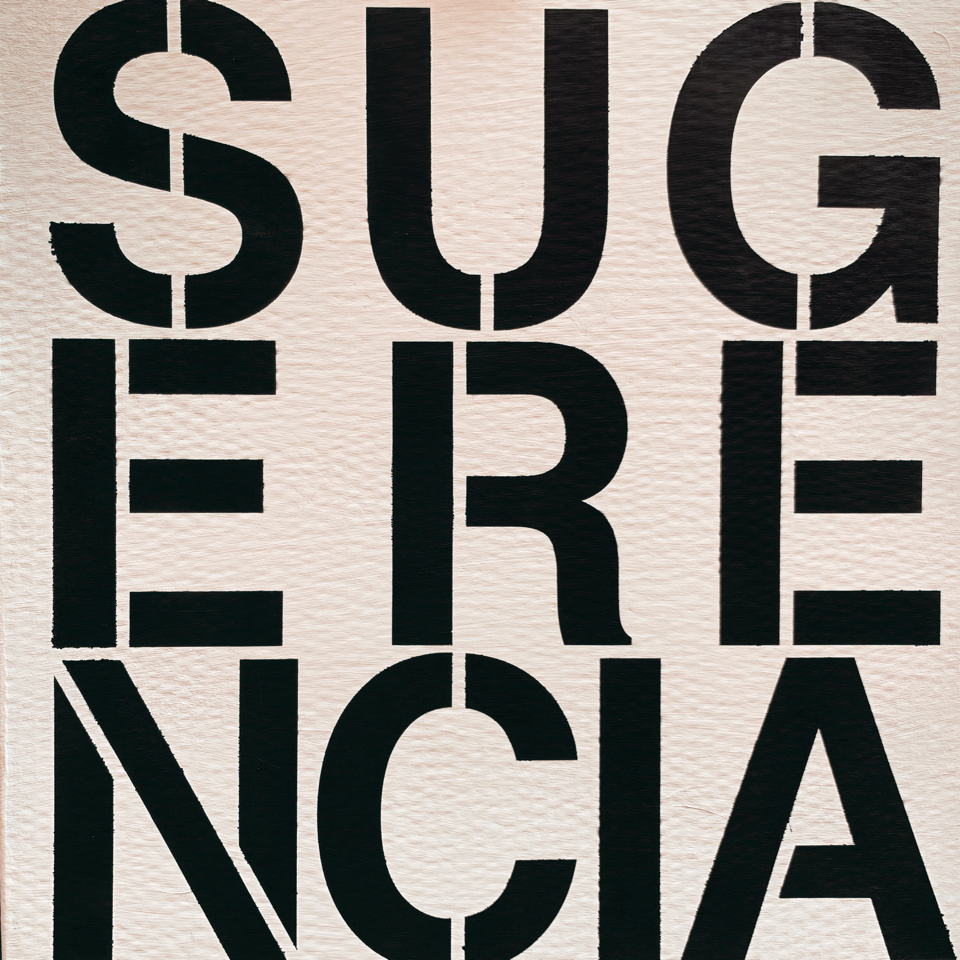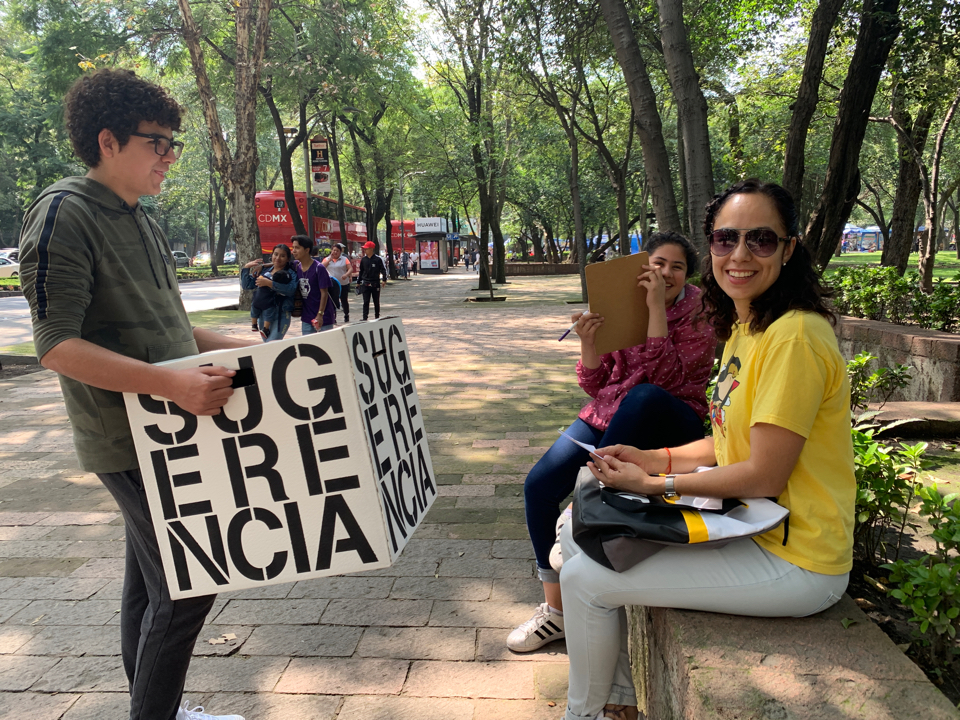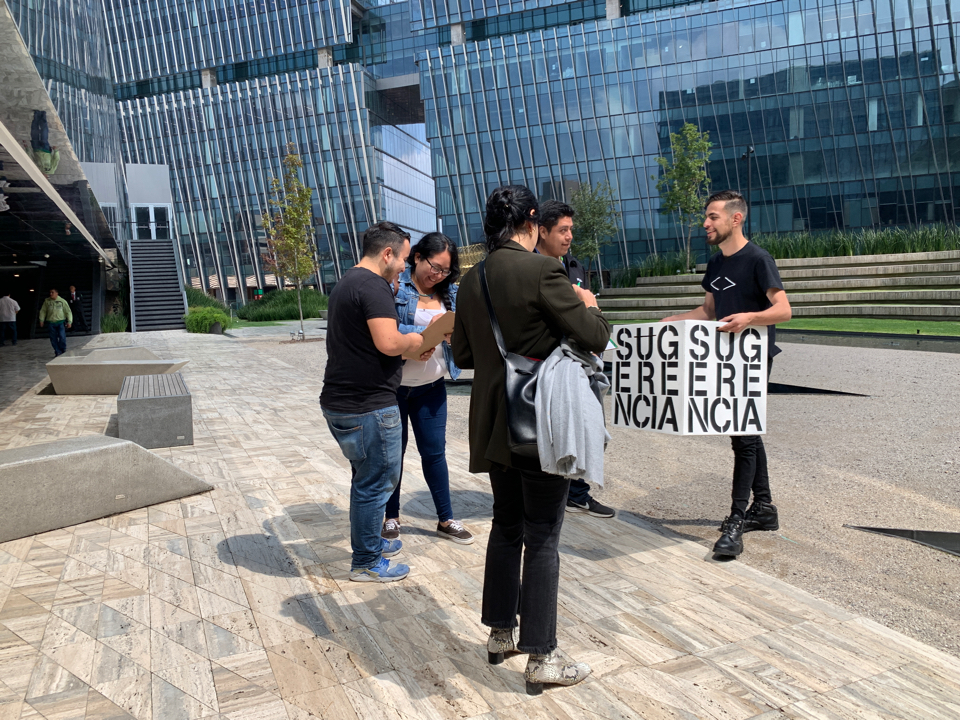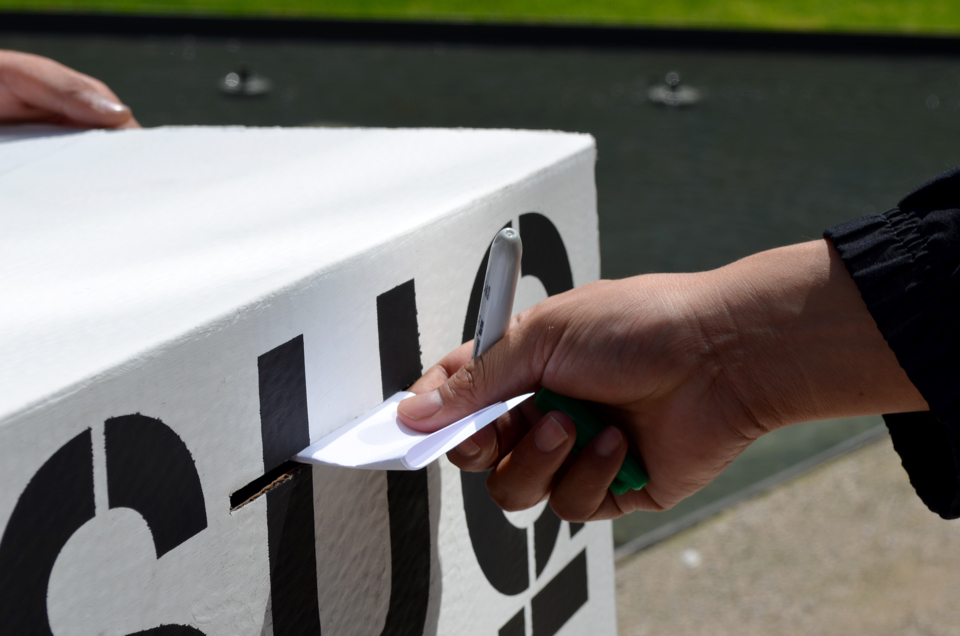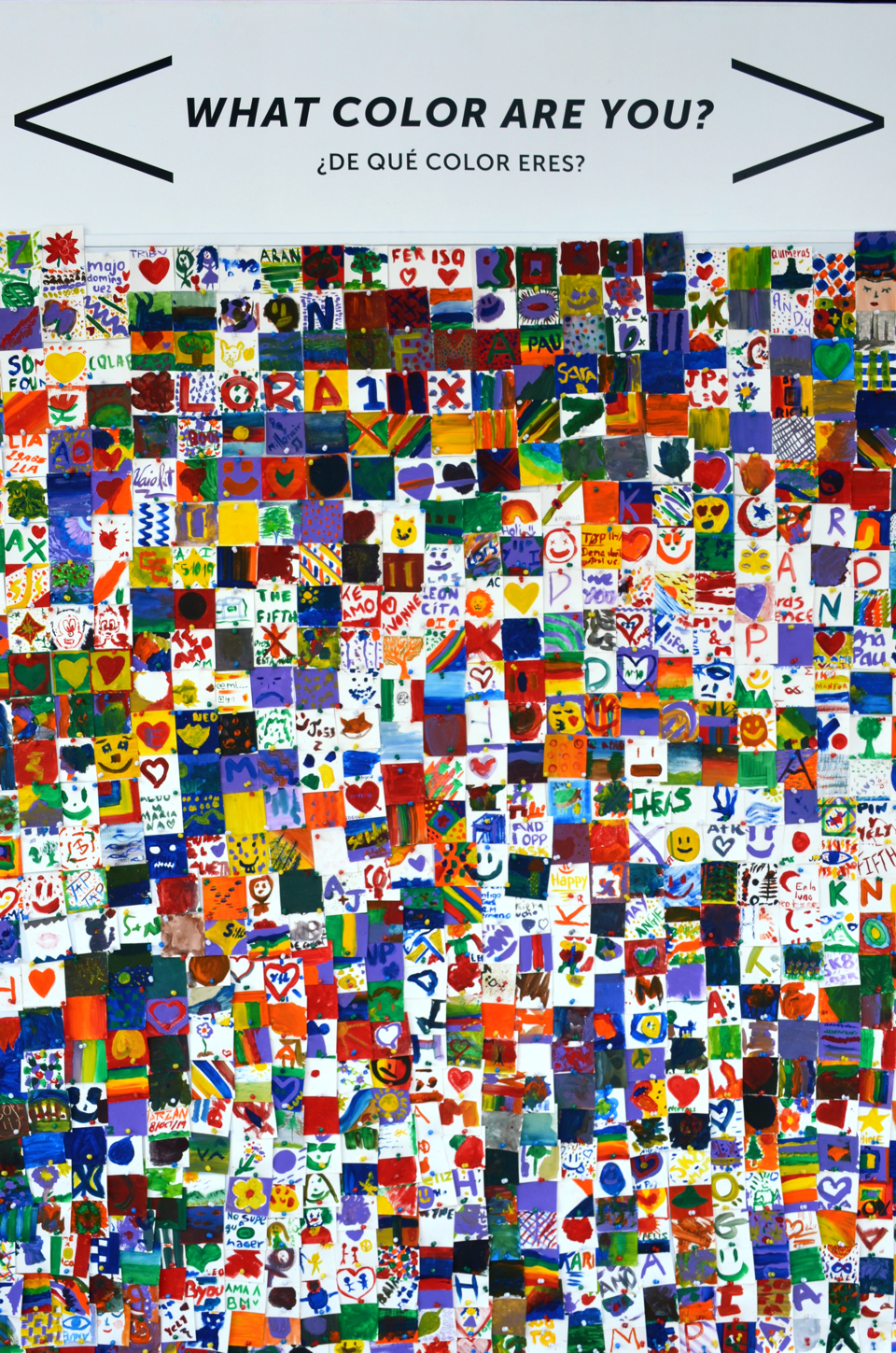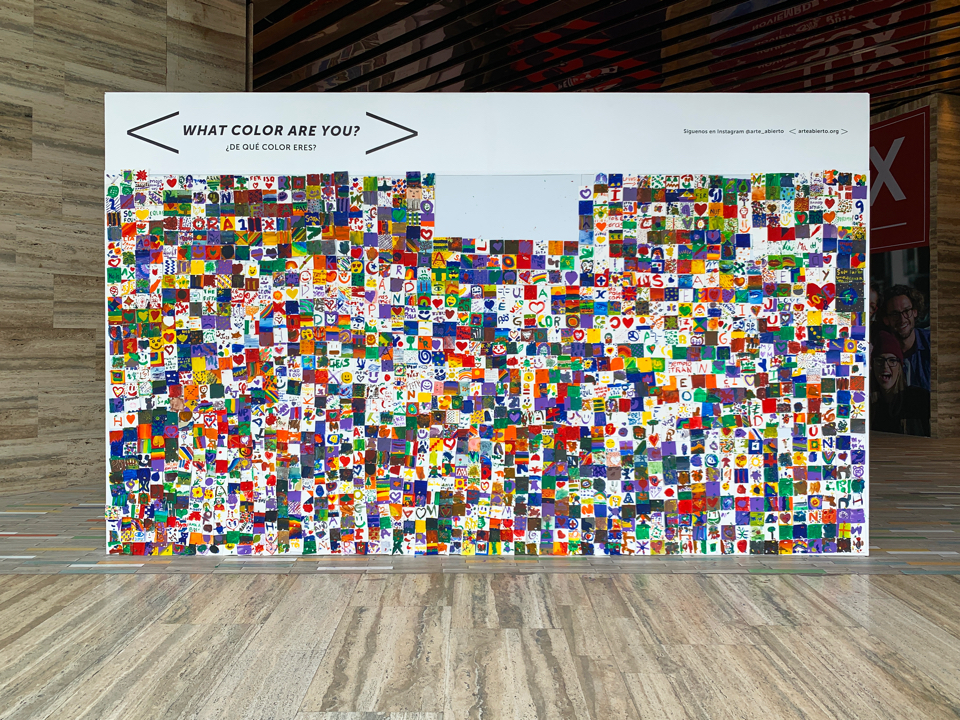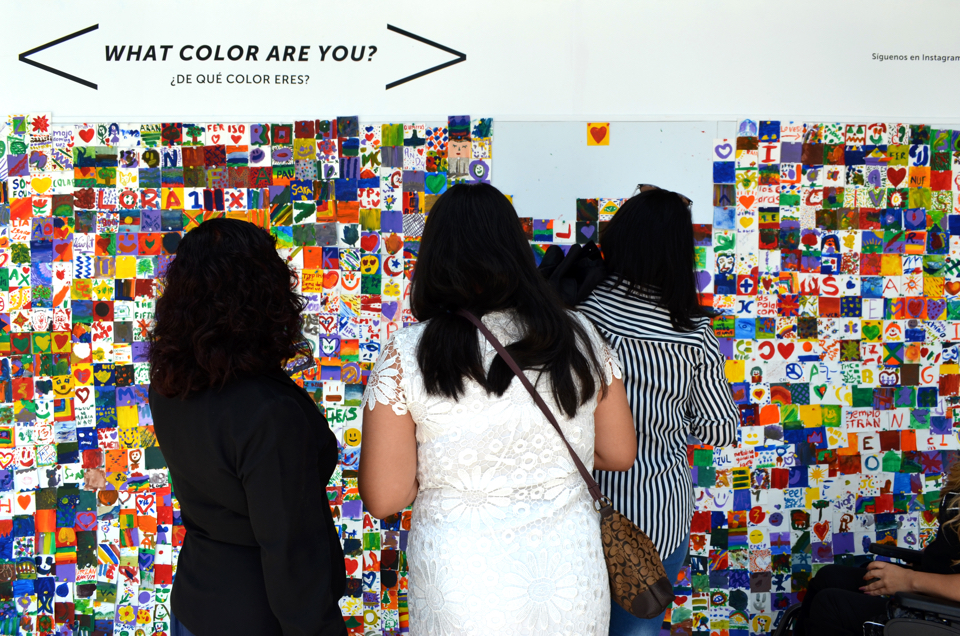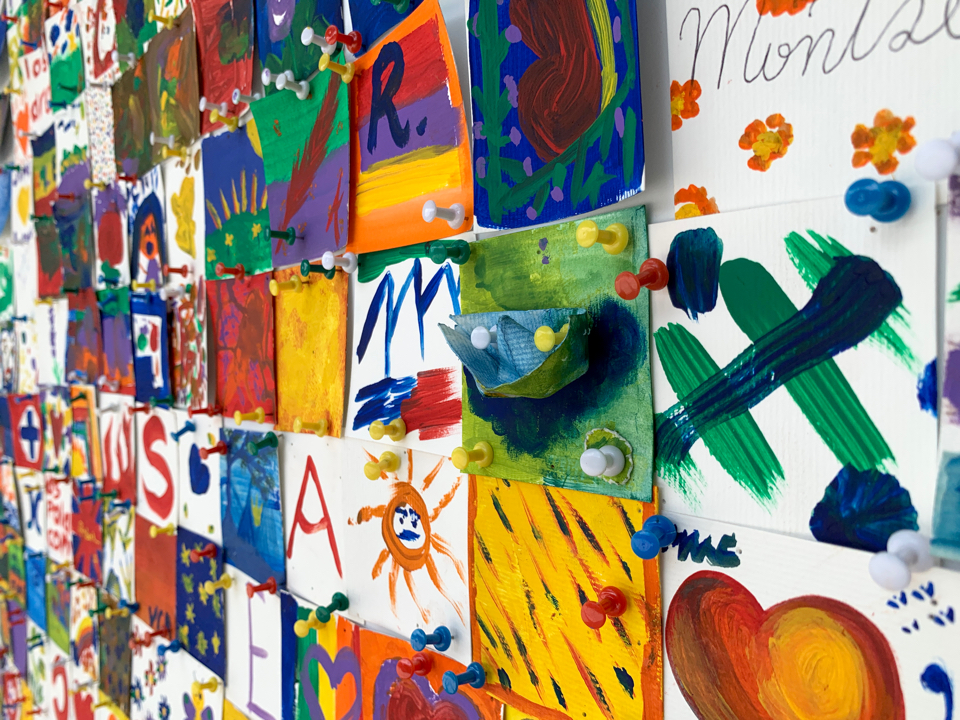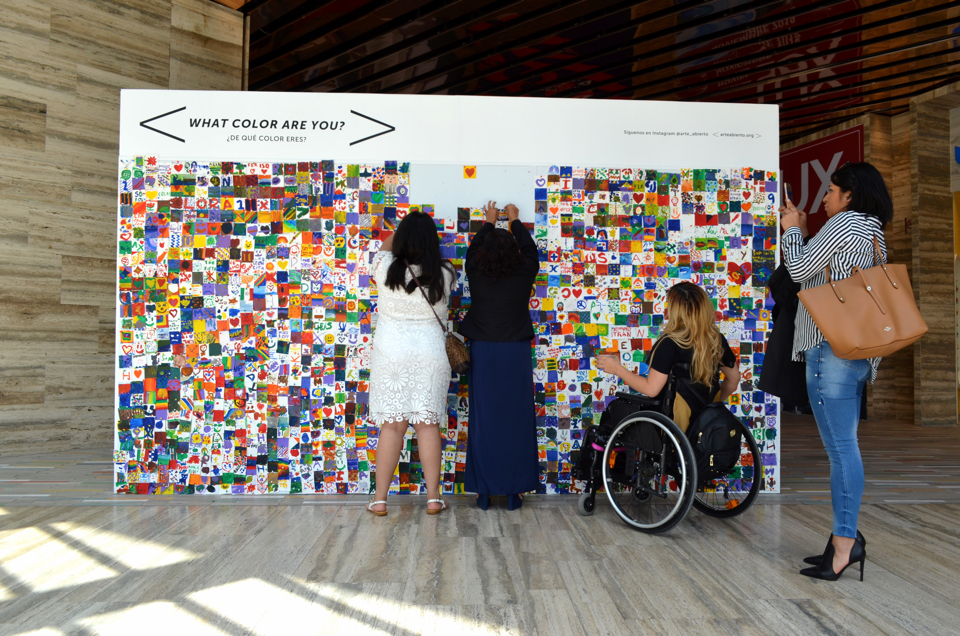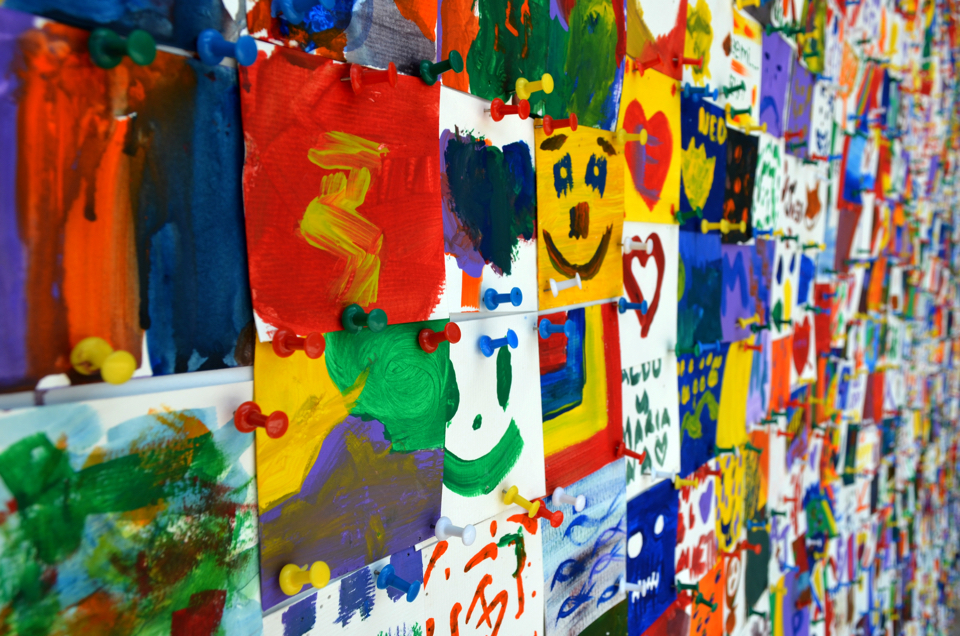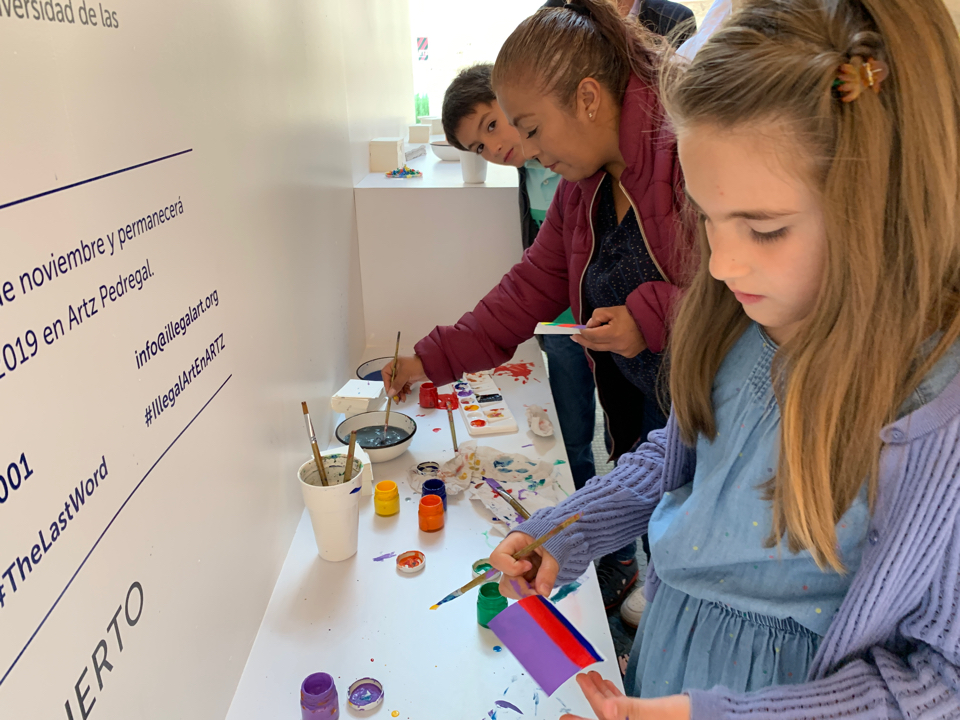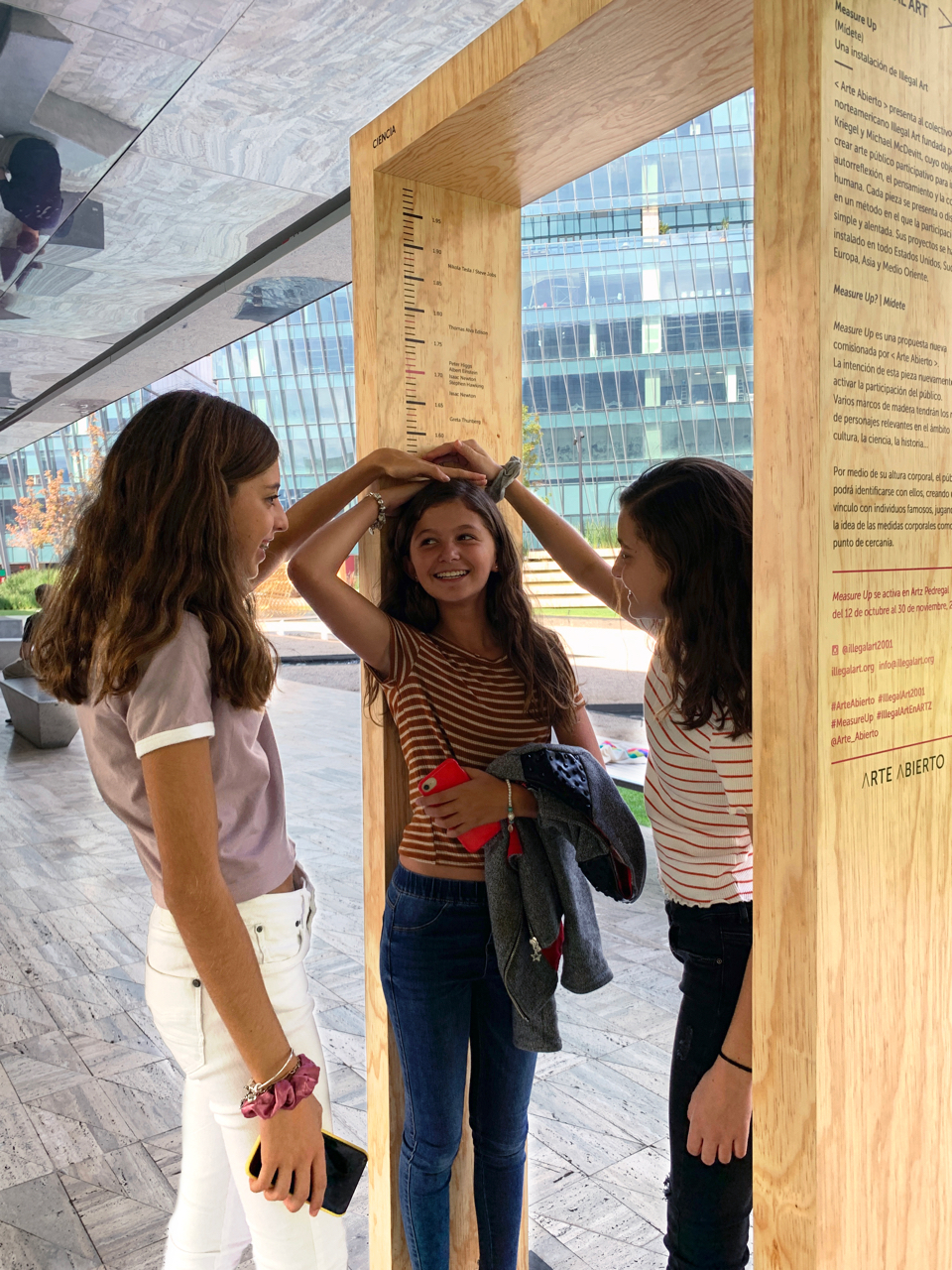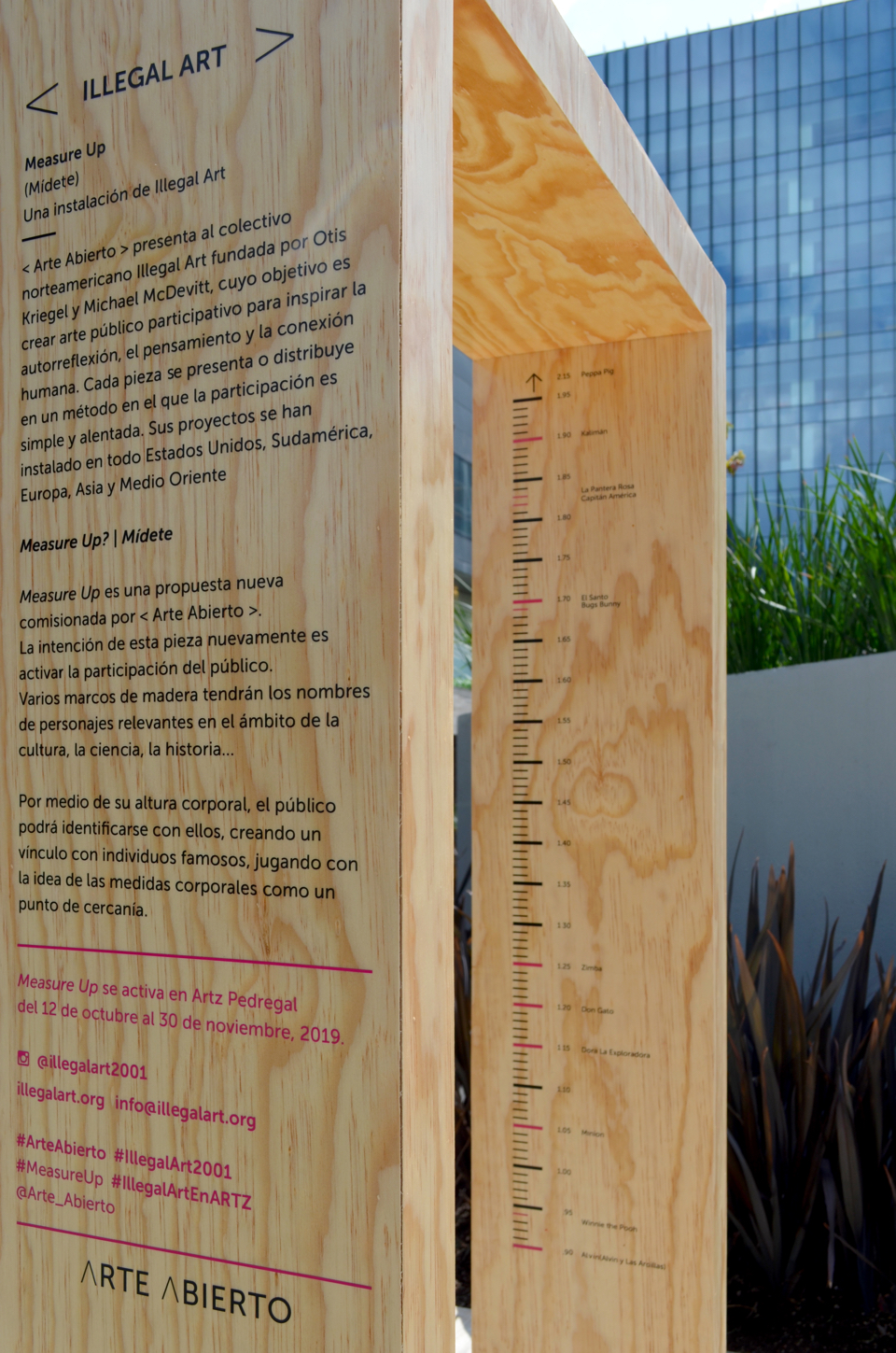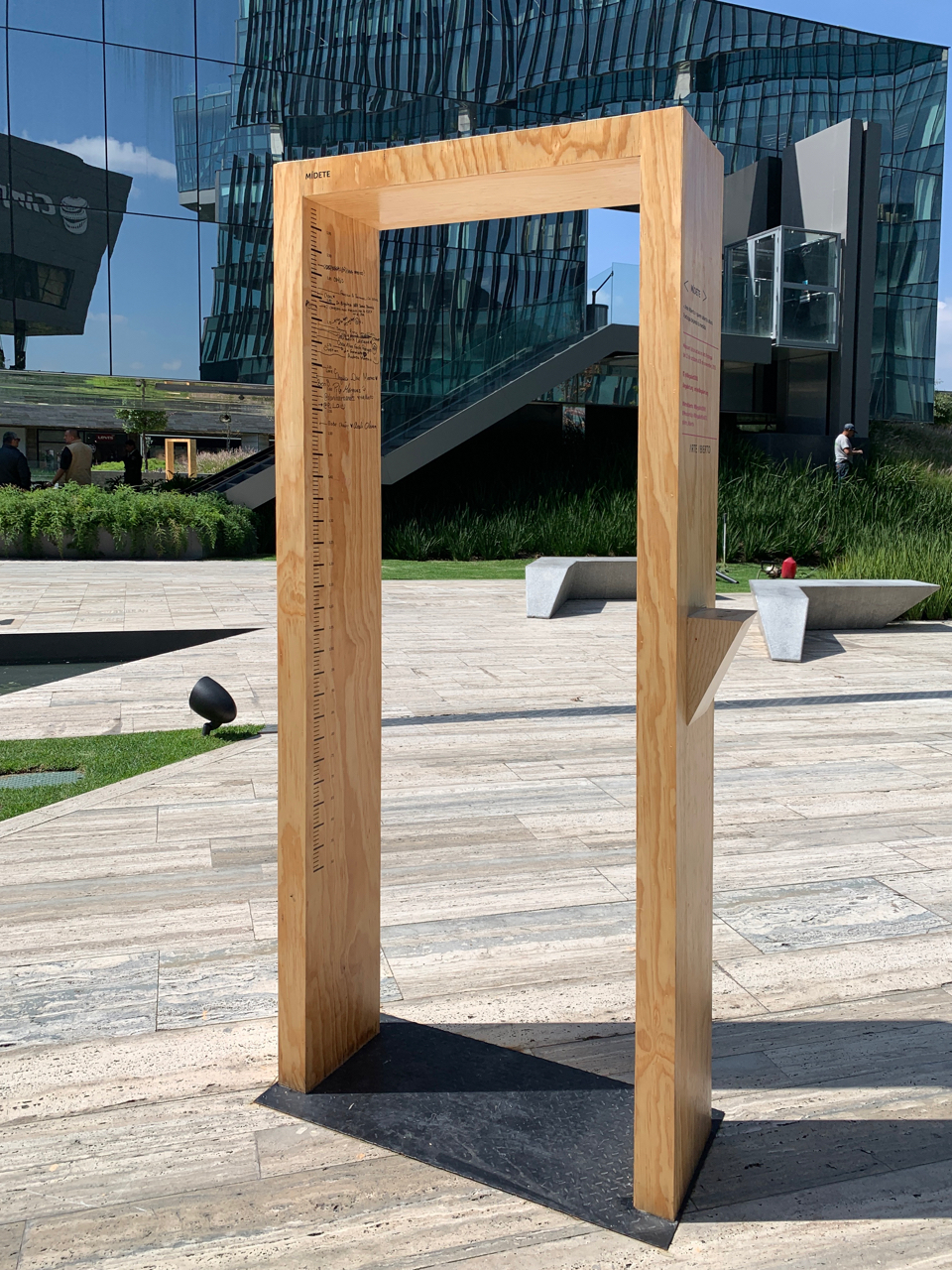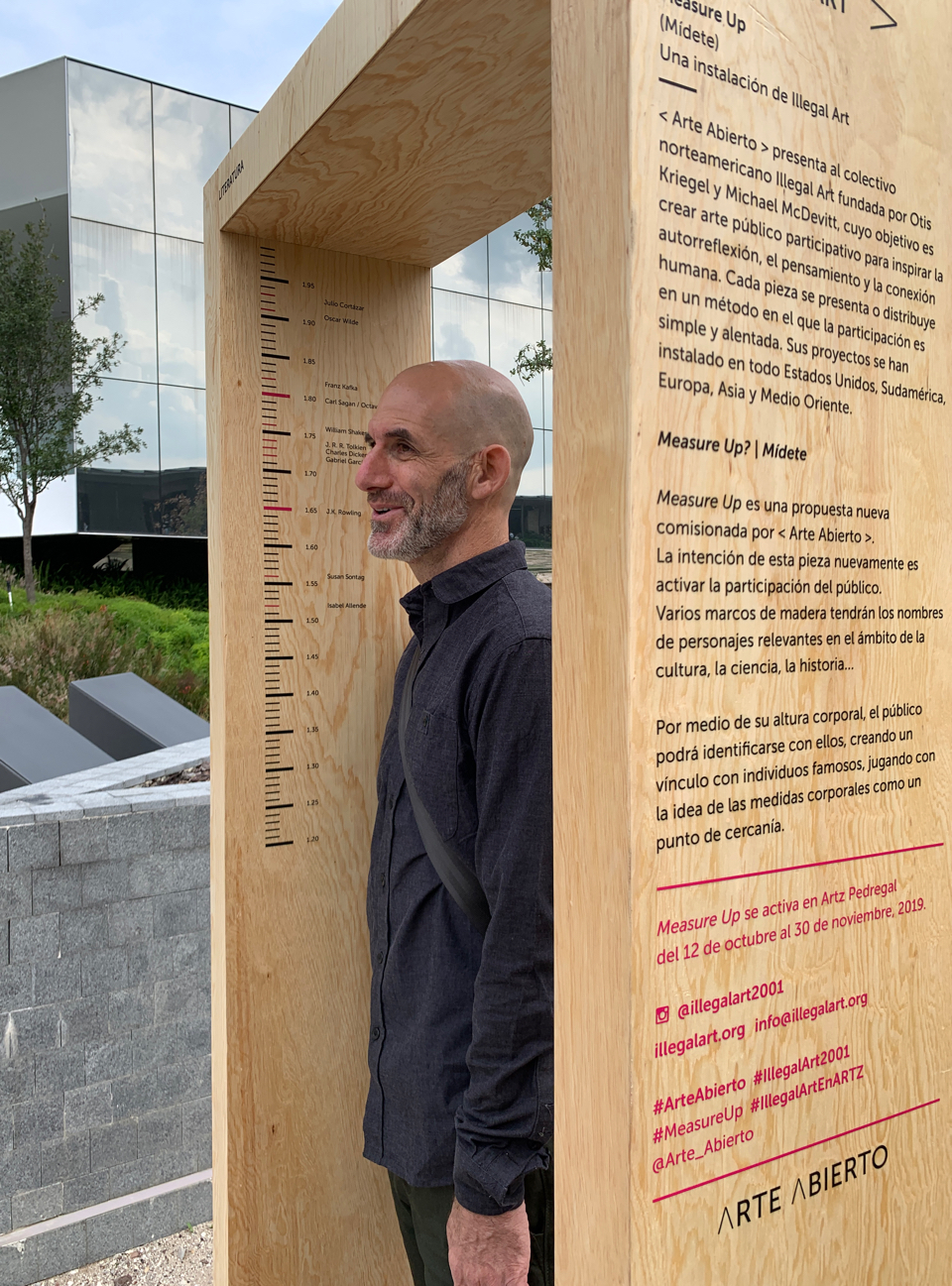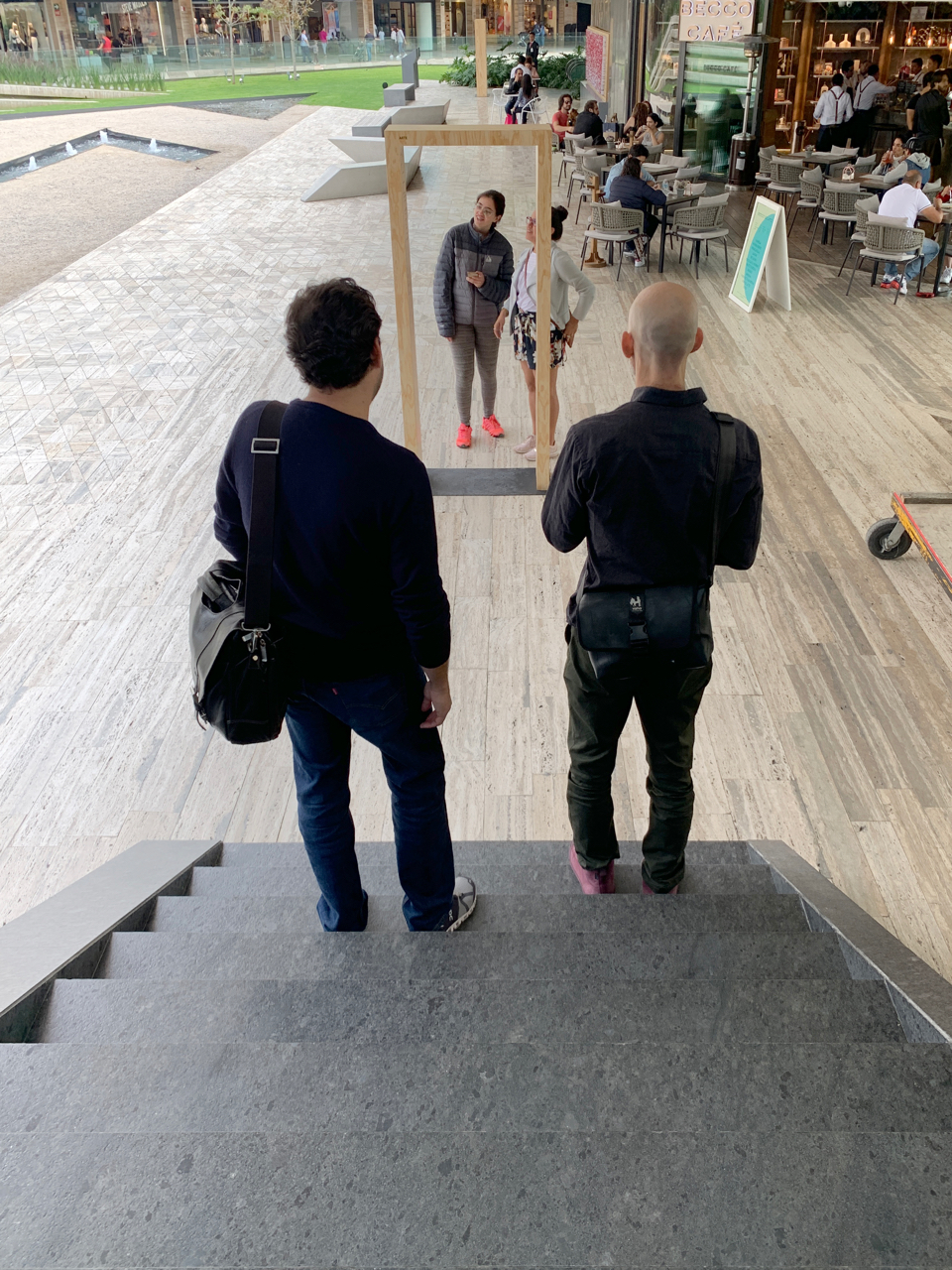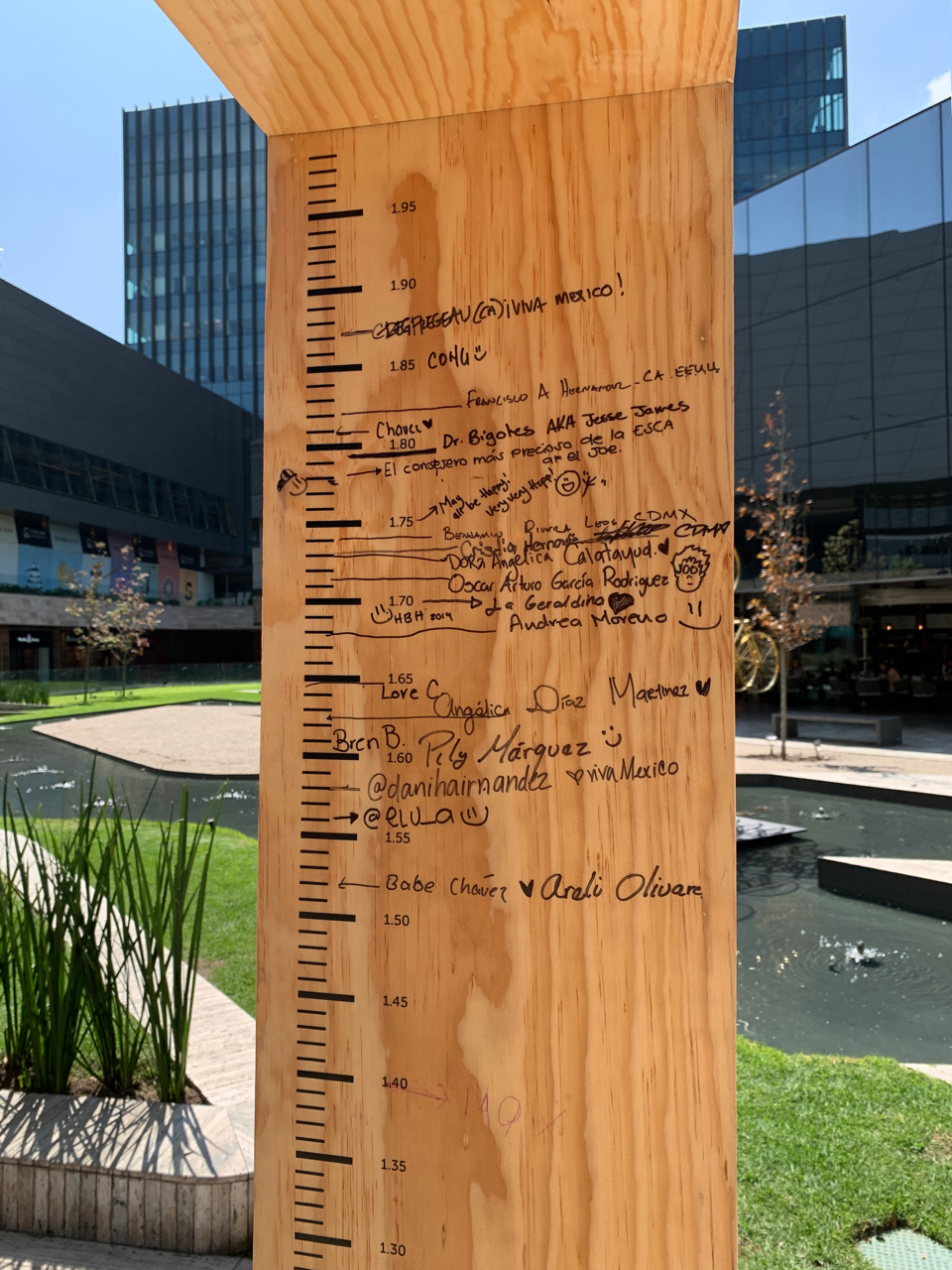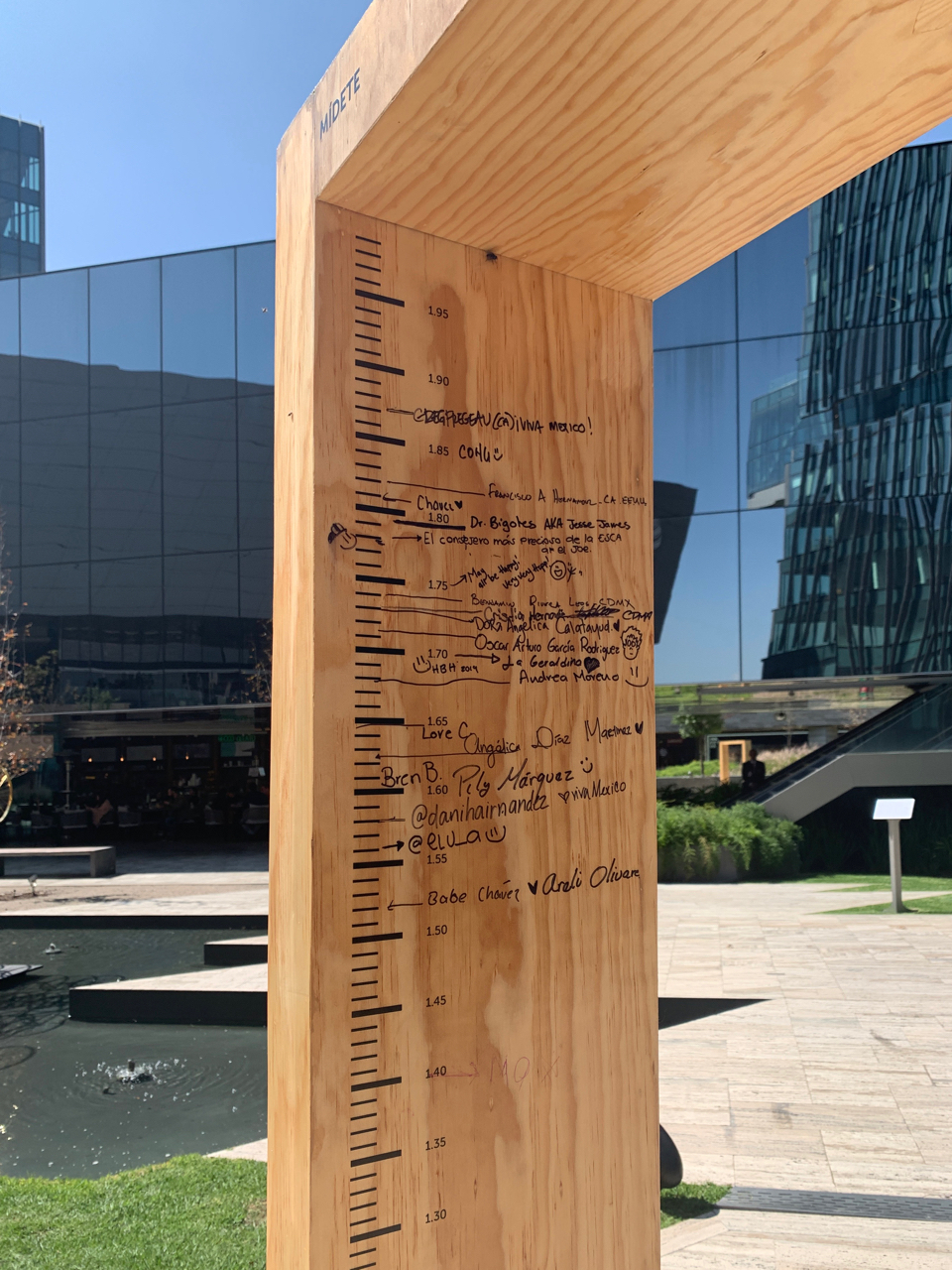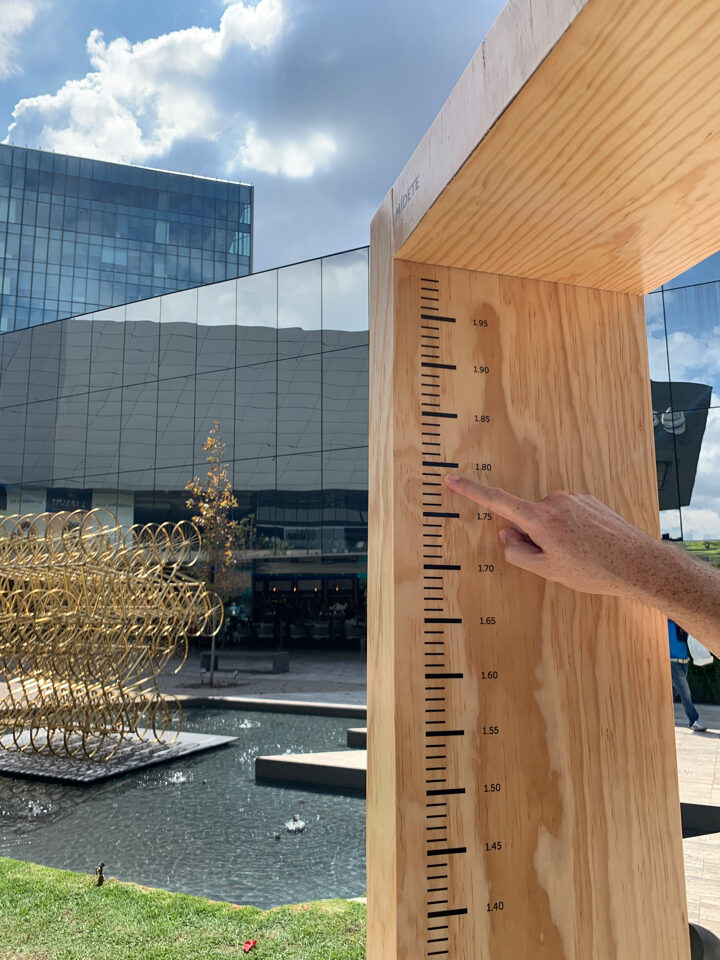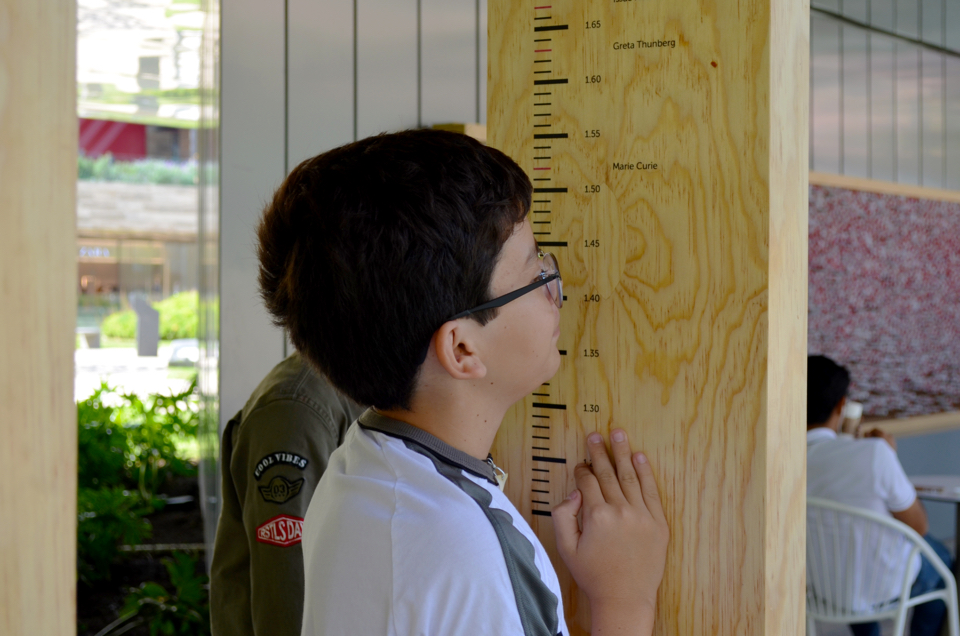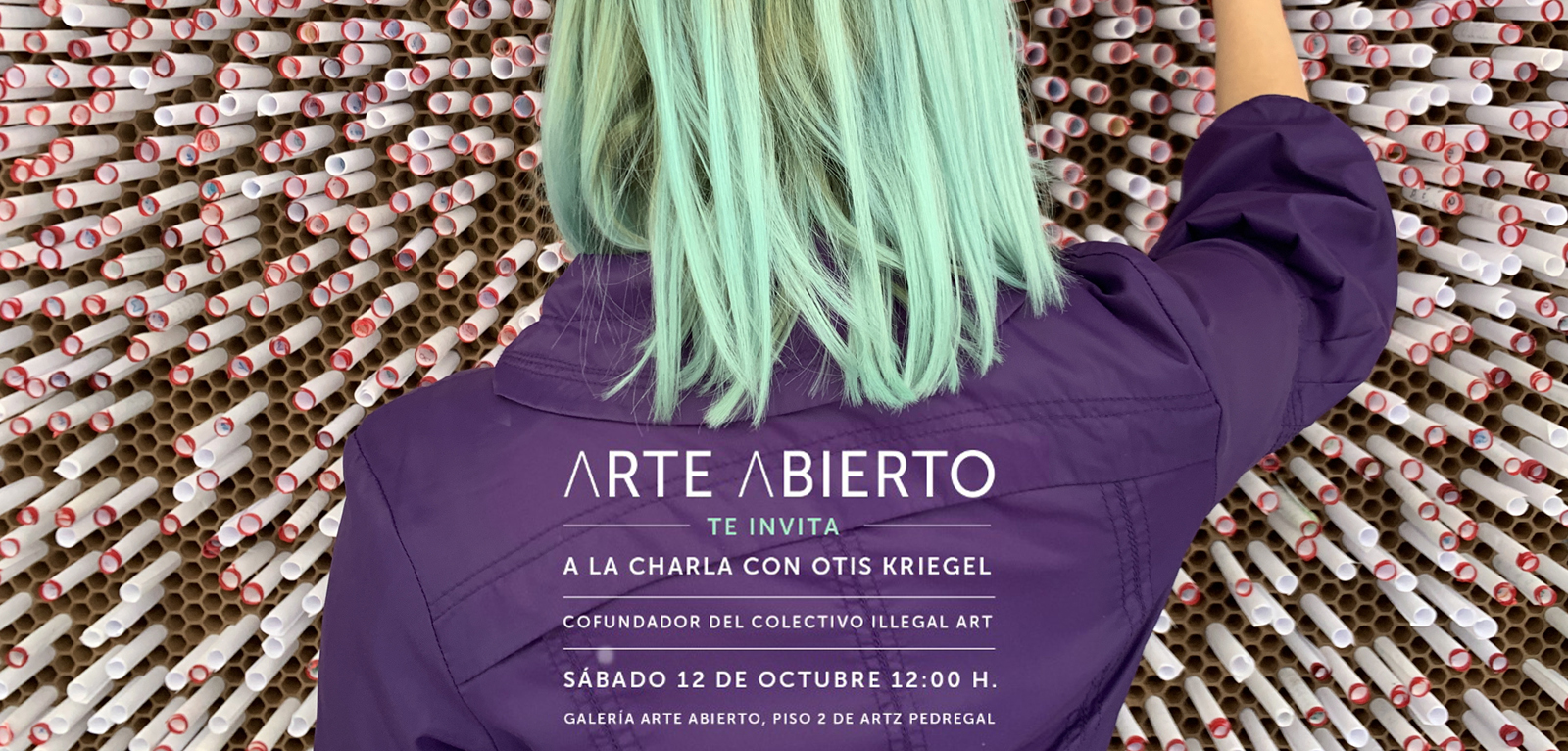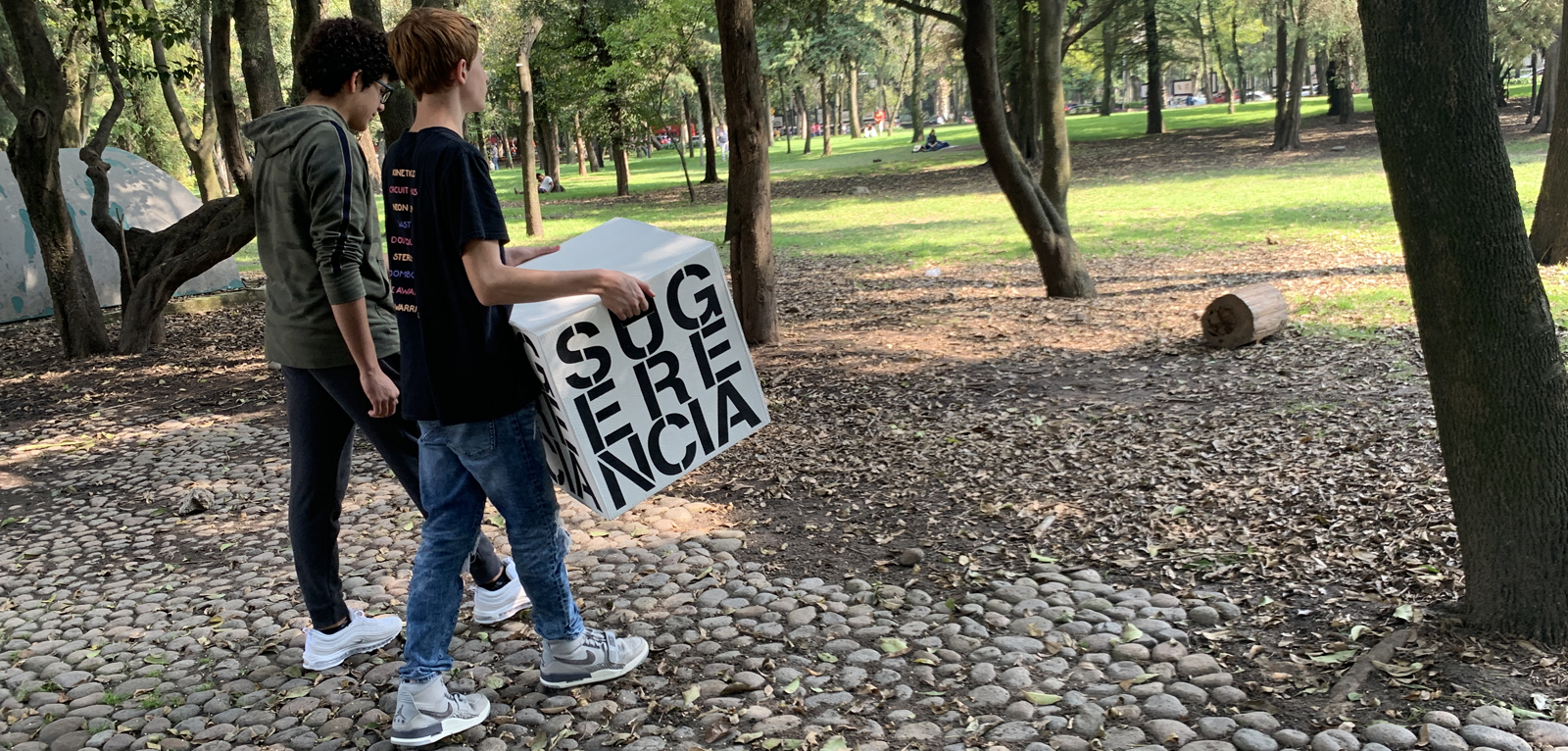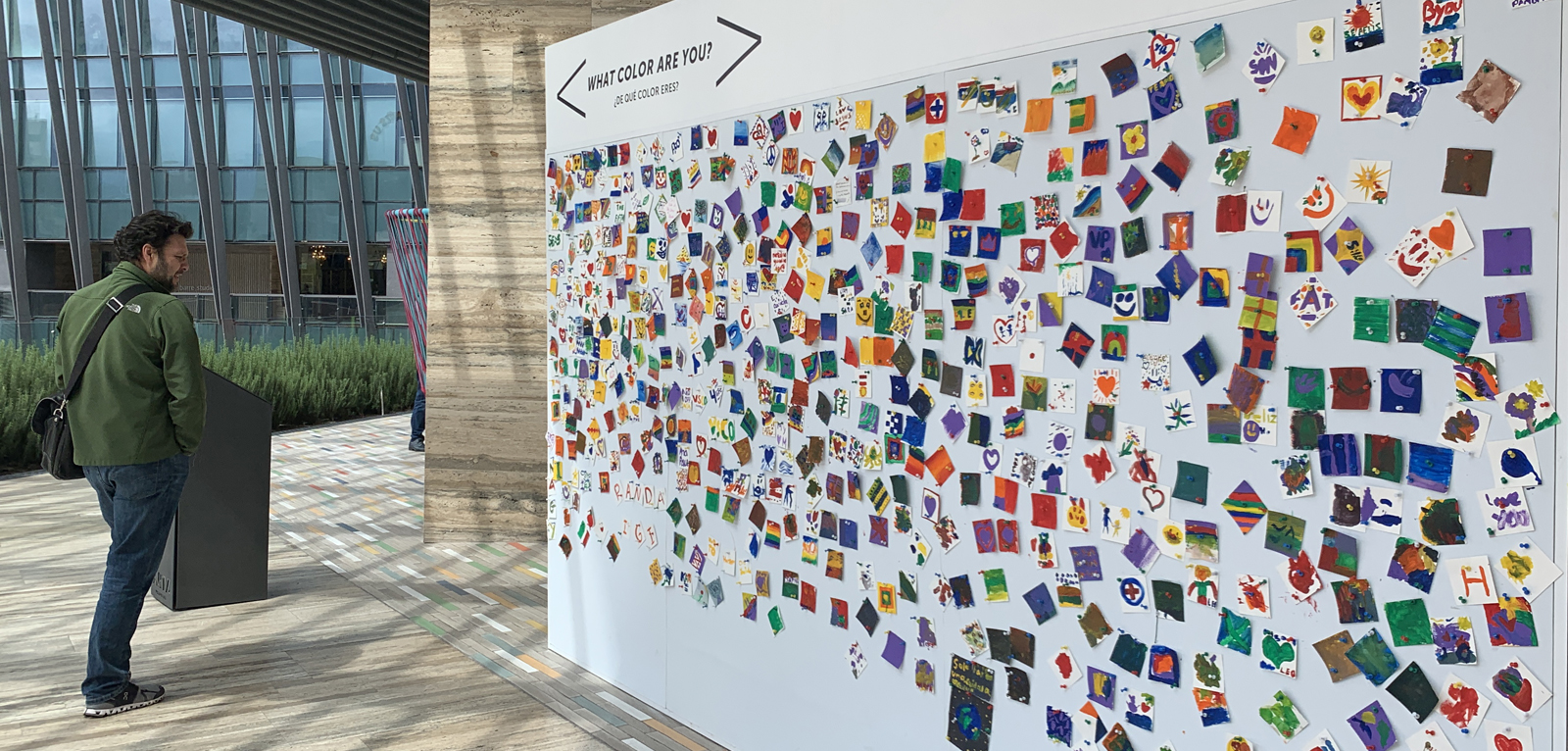In September 2019, the New York based collective Illegal Art presented for the first time in Mexico three projects in Artz Pedregal: Last Word, Suggestion Box, What Color Are You? and the installation commissioned by <Arte Abierto>, Measure Up. Each one encouraged the participation of the public, as a creative-collective experience.
There are always things that are not said, that we keep and remain within us. The installation can be the perfect ending to a conversation with a stranger, an intelligent response in a debate at work, a farewell to a loved one and, above all, a space for opportunities to have the last word that we have lost.
The Last Word provides an intimate moment to take back what was never said. The public can write their “last word” on a piece of paper, then roll it up and place it in small cavities in a cardboard wall that resemble the shape of a honeycomb.
The rolled-up papers in which thoughts and emotions were captured can be read by other people who decide to participate, thus accessing a repertoire of diverse ideas and reflections.
Everyone is free to take part or limit themselves only to reading what others have written and to make collective reflections. The words respect individuality, but reveal that the experience is greater when the participation is collective. The work grows with the contribution of the public. Perhaps with these exercises we can get closer to understanding concepts such as happiness, sadness, desires and take advantage of the moment of self-reflection that art offers.
The Last Word was activated from September 14 to October 12, 2019. The piece remained until November 9, 2019 at Artz Pedregal.
For this action, people in different parts of Mexico City were asked to write down a suggestion, idea or thought of any kind on a piece of paper, and place it in a small slot included in a transportable cardboard box. Once the boxes were filled with suggestions, they were compiled and posted on <Arte Abierto> social media as anonymous thoughts.
Suggestion Box has traveled to three continents and been activated by individuals and groups in local communities, collecting the ideas of tens of thousands of people in numerous languages. In 2005, Chronicle Books published a compilation of suggestions made in New York under the title Suggestion.
Suggestion Box was activated from September 20 to October 12 at different locations in Mexico City and the boxes were opened with Otis Kriegel, co-founder of Illegal Art, at Espacio Arte Abierto.
In this activation, each participant was invited to paint on a blank 3 x 3 inch (7.62 x 7.62 cm) paper the color that they felt essentially represented them as people. Subsequently, they were asked to place it on a checkered panel, next to each other. The result was a mosaic full of different shades, representing hundreds of people related by a physical space.
The public was invited to participate in What Color Are You? from October 5 to November 9. The piece remained on display until November 29, 2019 at Artz Pedregal.
At one point or another, we’ve all looked up to public figures, from movie stars and athletes, to activists, explorers, scientists, and artists. Giants in their fields, they have adorned magazines and screens to be larger than life within our minds. But how big are they in real life? Can we measure up to them?
Measure Up is a project commissioned by <Arte Abierto>, which plays with the international growth indicator of childhood: the frame of the home door marked with centimeters. Along an outdoor path, wooden structures were placed, simulating these frames, each indicating the height and the names of well-known personalities of culture, science or history, whom we admire or aspire to resemble.
The intention was to put things in perspective and that, through their height, each participant could identify and create a bond with these characters.
Measure Up was activated in Artz Pedregal from October 12 to November 30, 2019.
The Illegal Art collective was founded in 2001 by artists Otis Kriegel and Michael McDevitt in New York. Their goal is to create participatory public art that inspires self-reflection, thought, and human connection. Each piece is presented or distributed in such a way that participation is simple and motivated. His projects have been presented in countries such as the United States, England, Spain, Italy, China, New Zealand, among others.
illegalart.org/
@illegalart2001.



